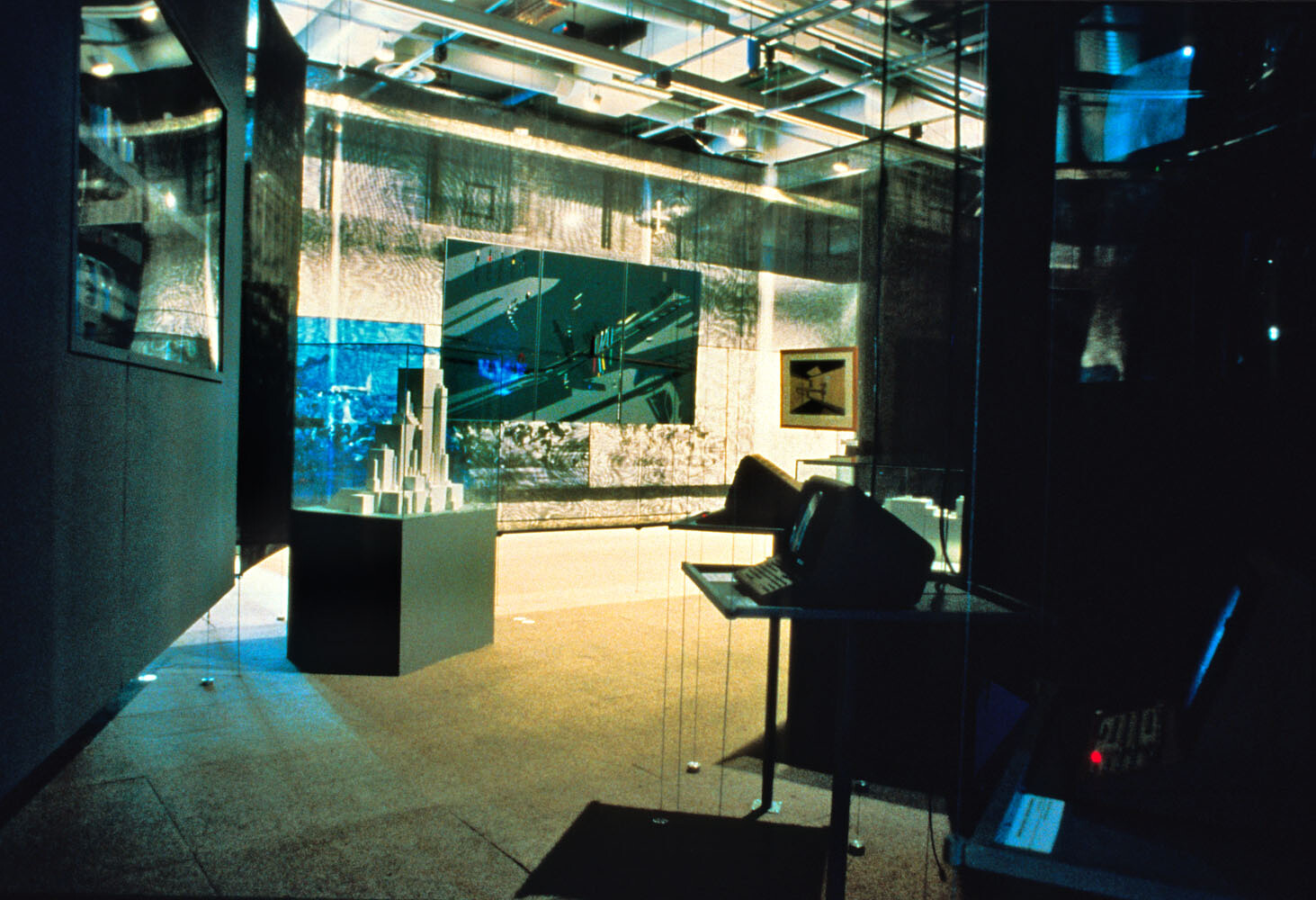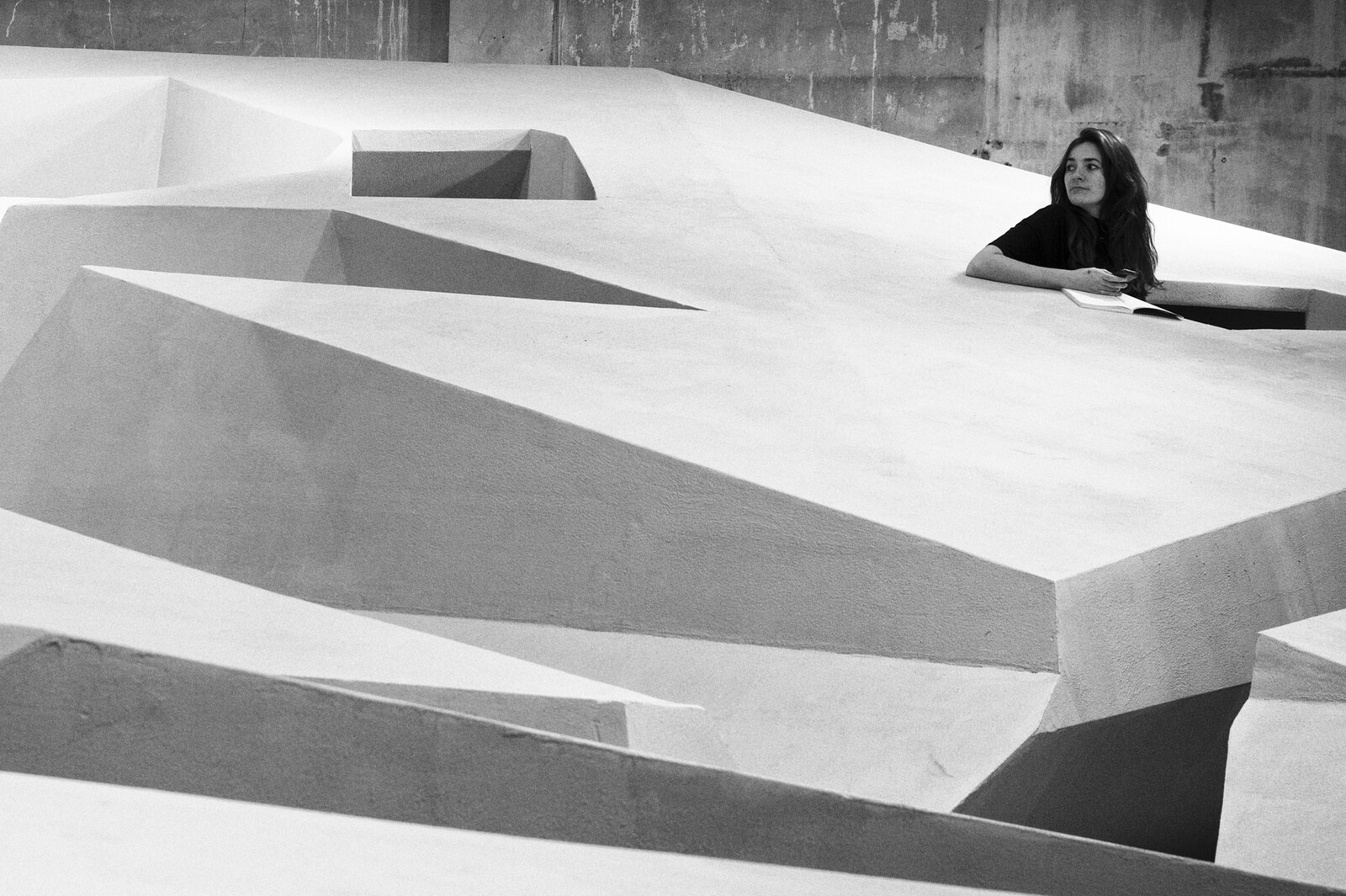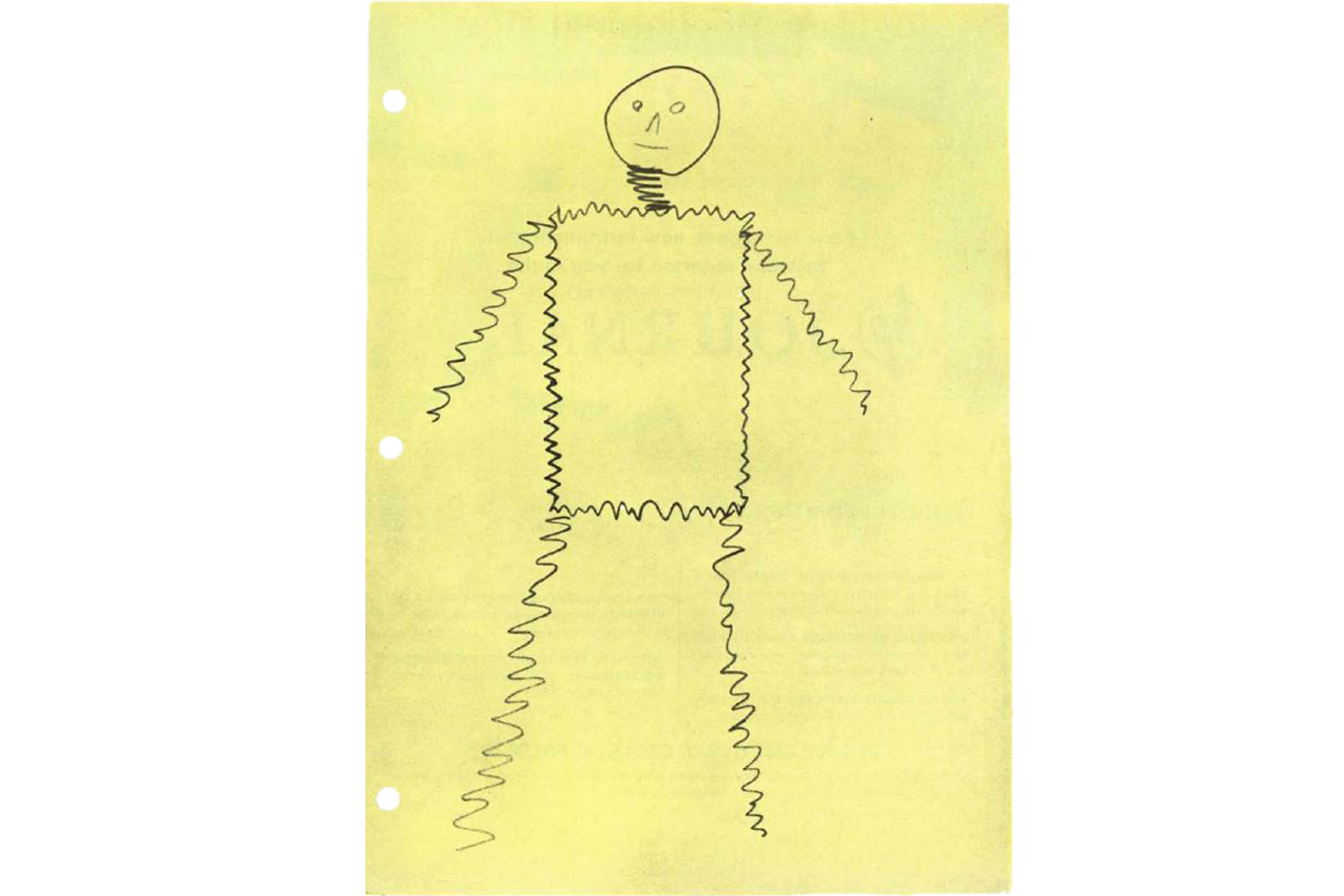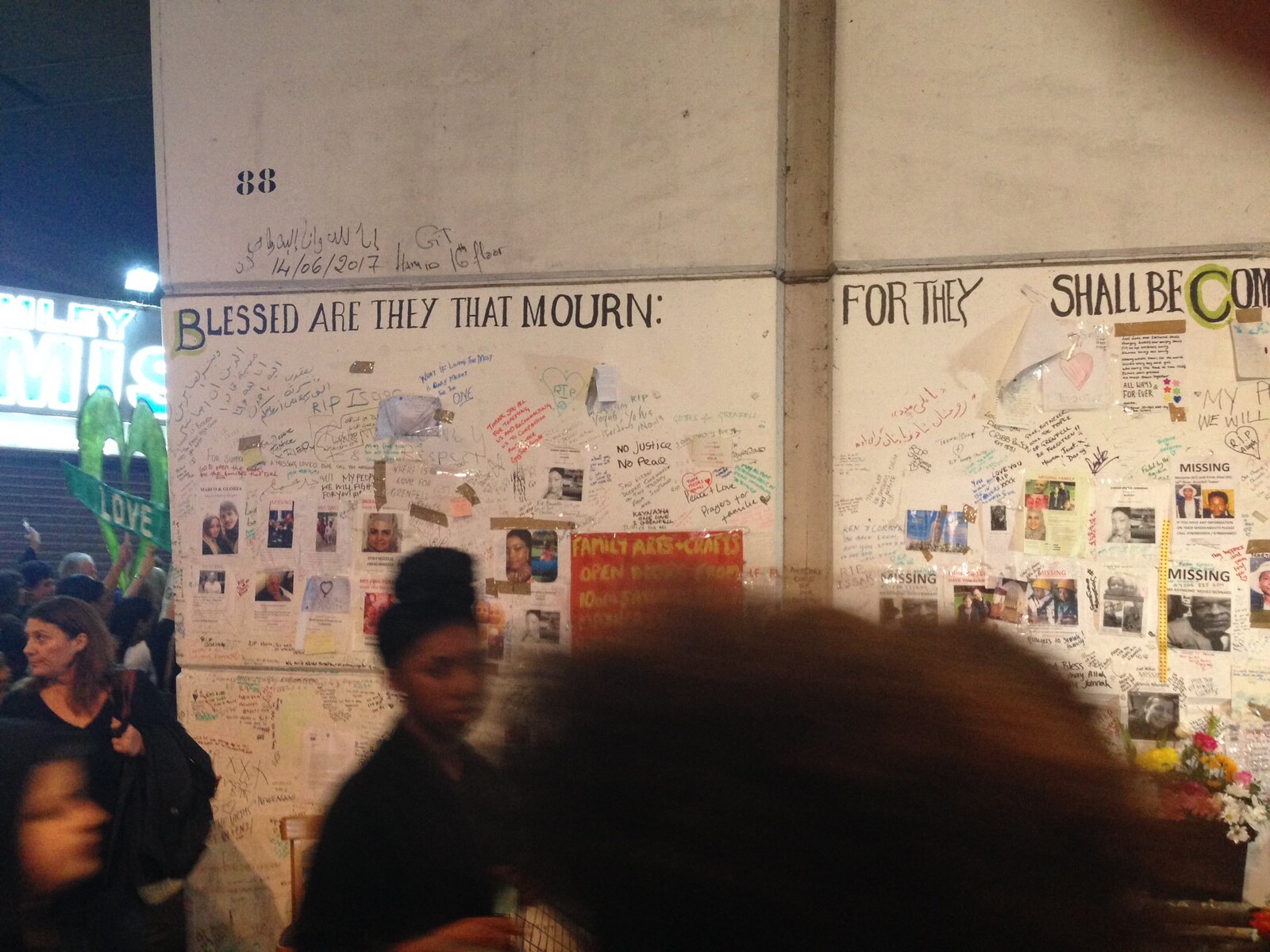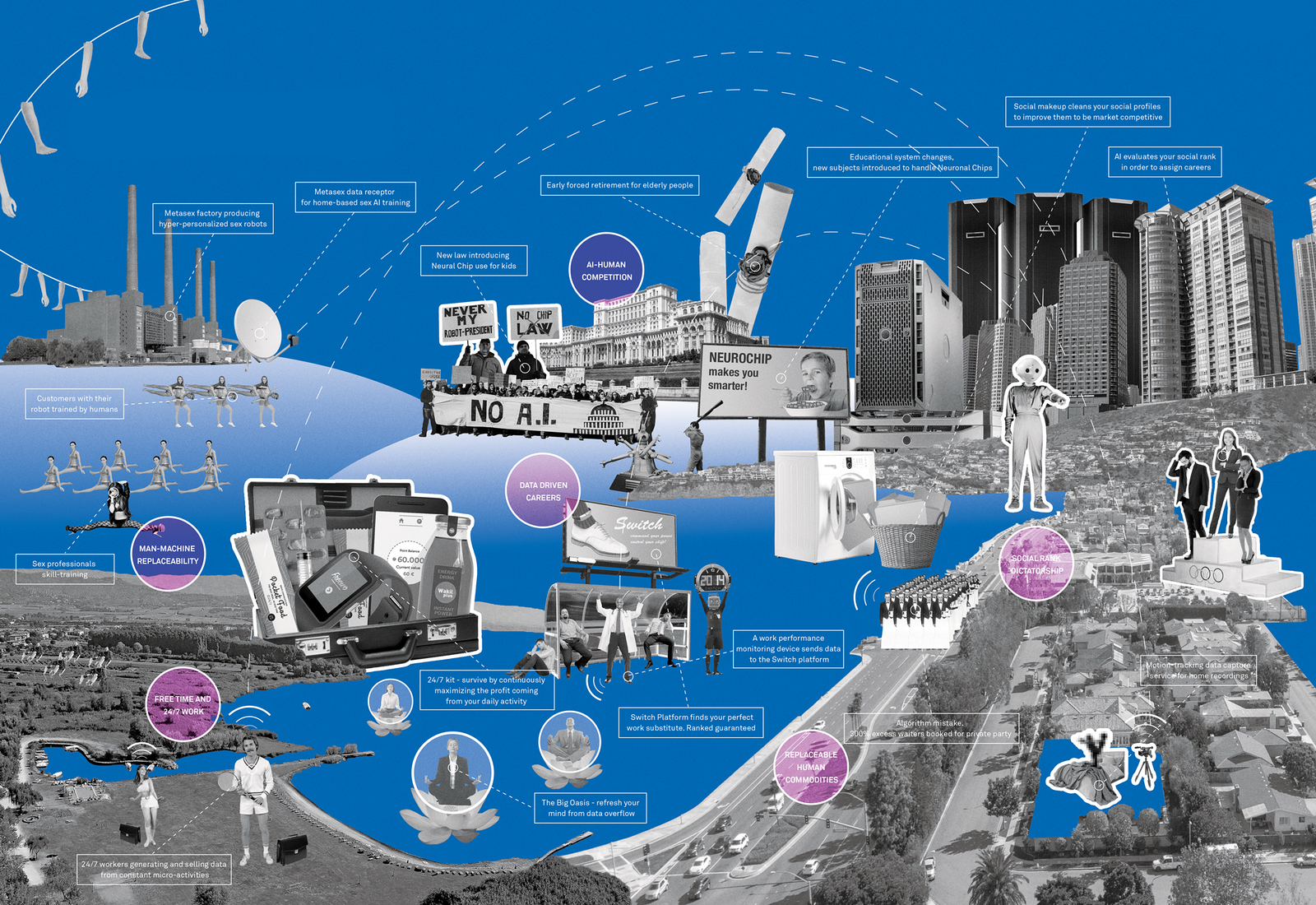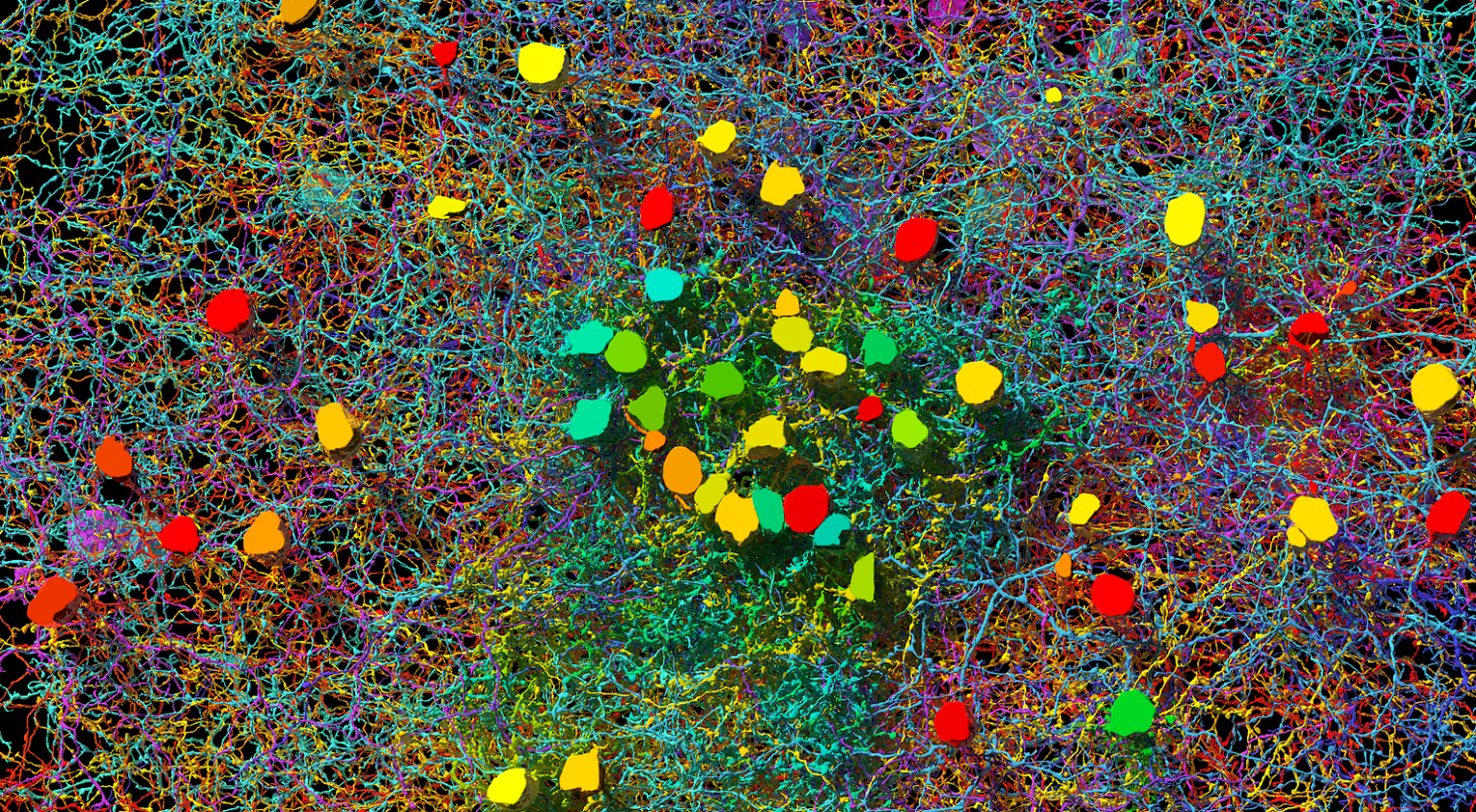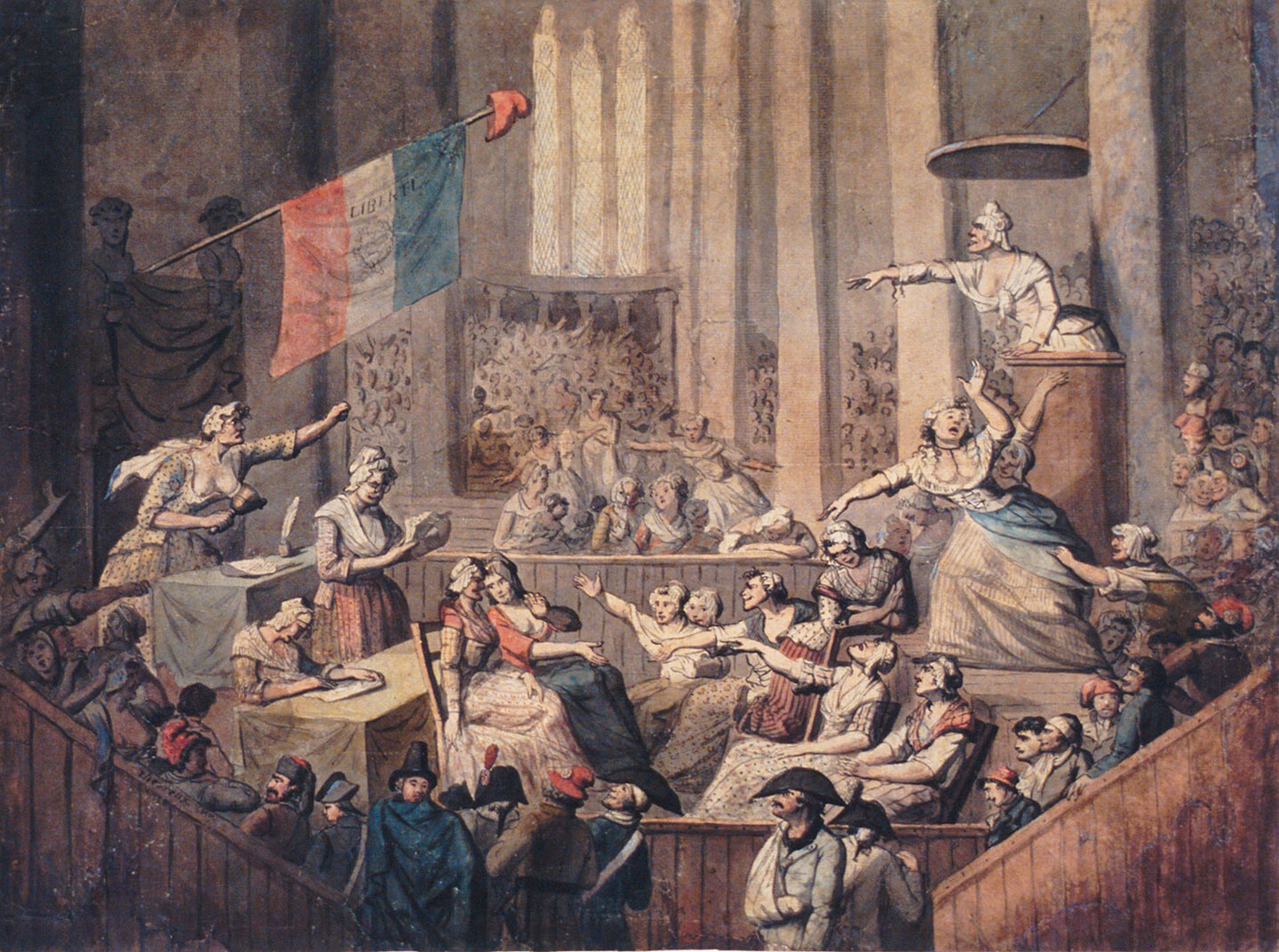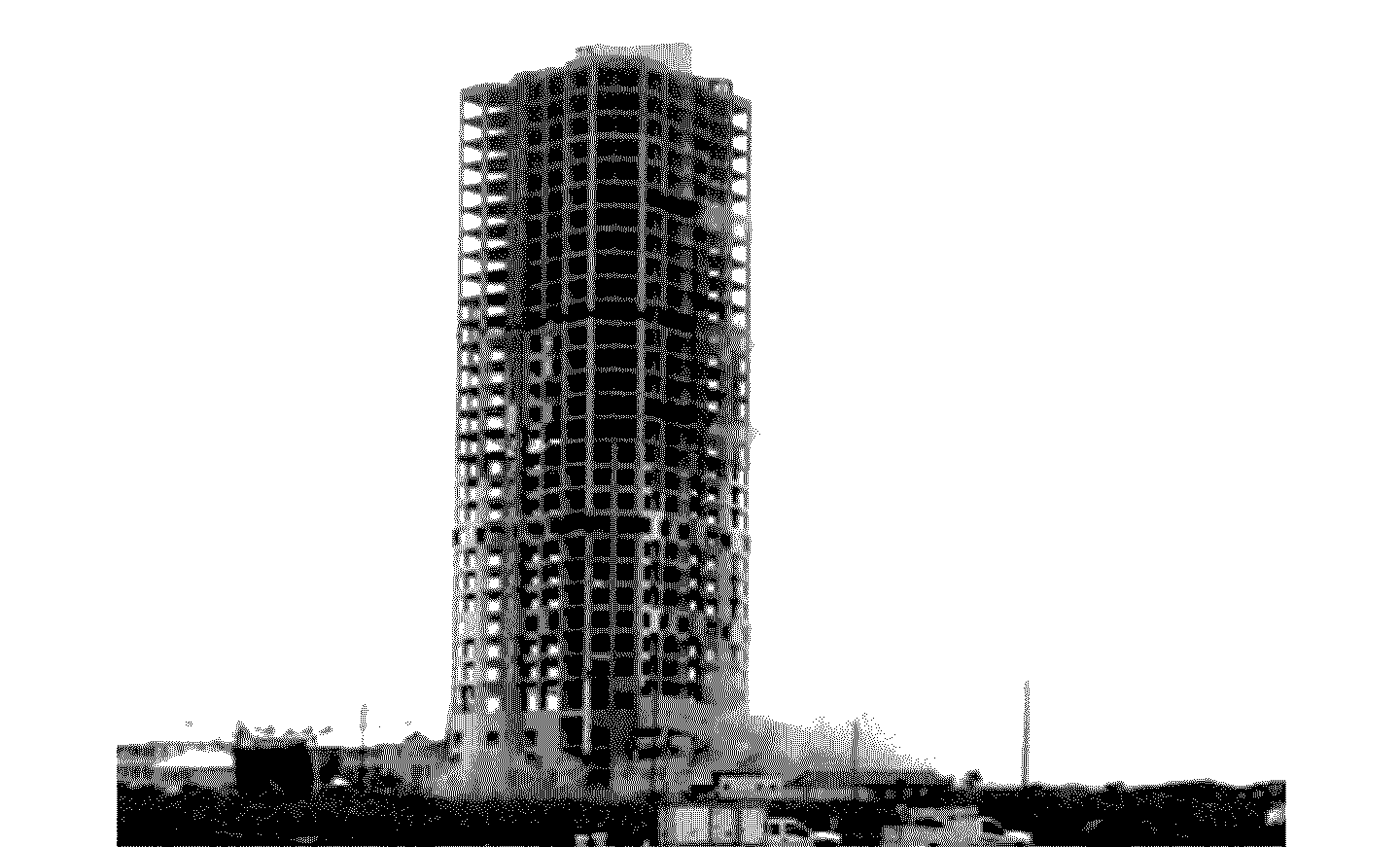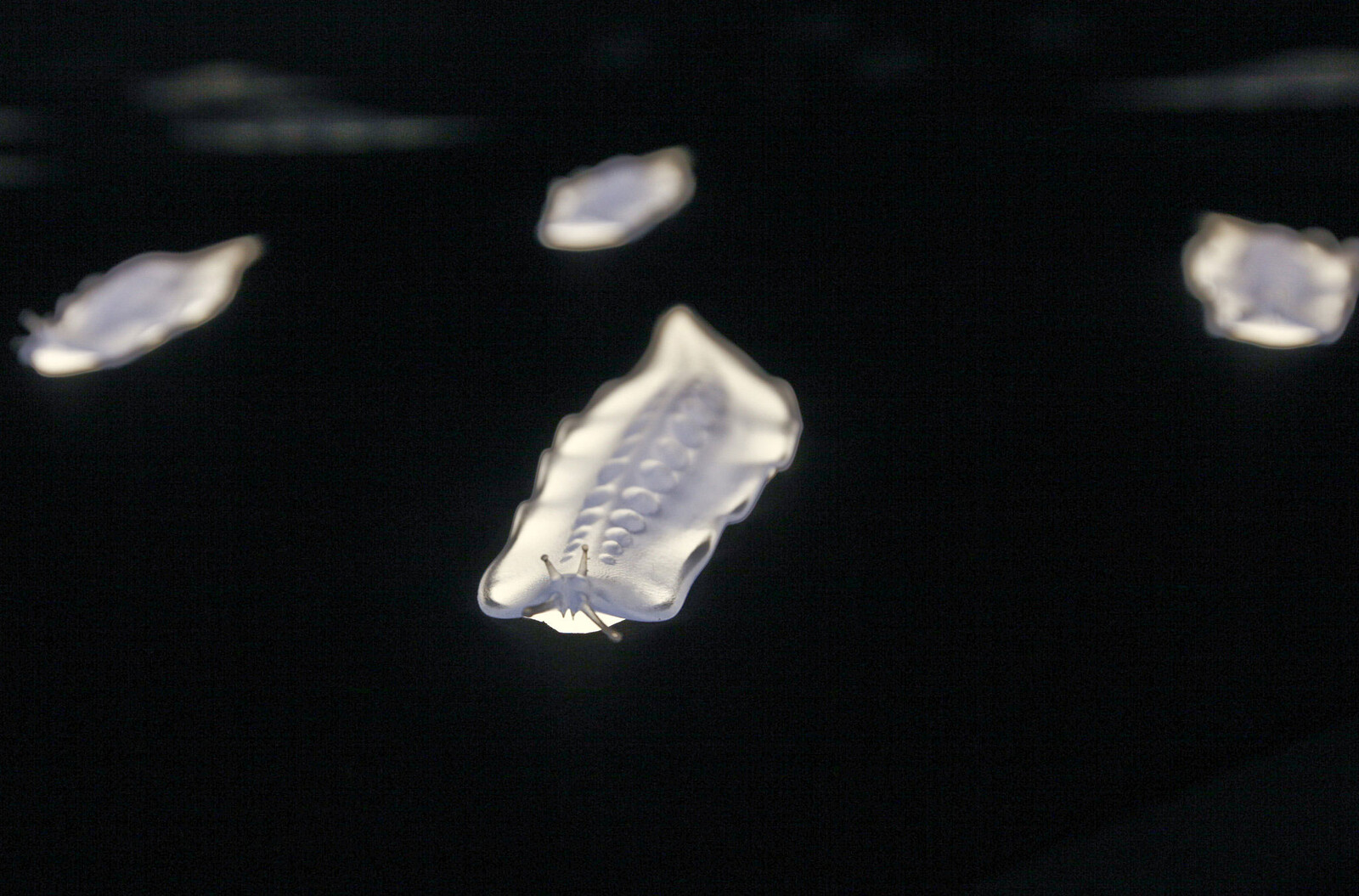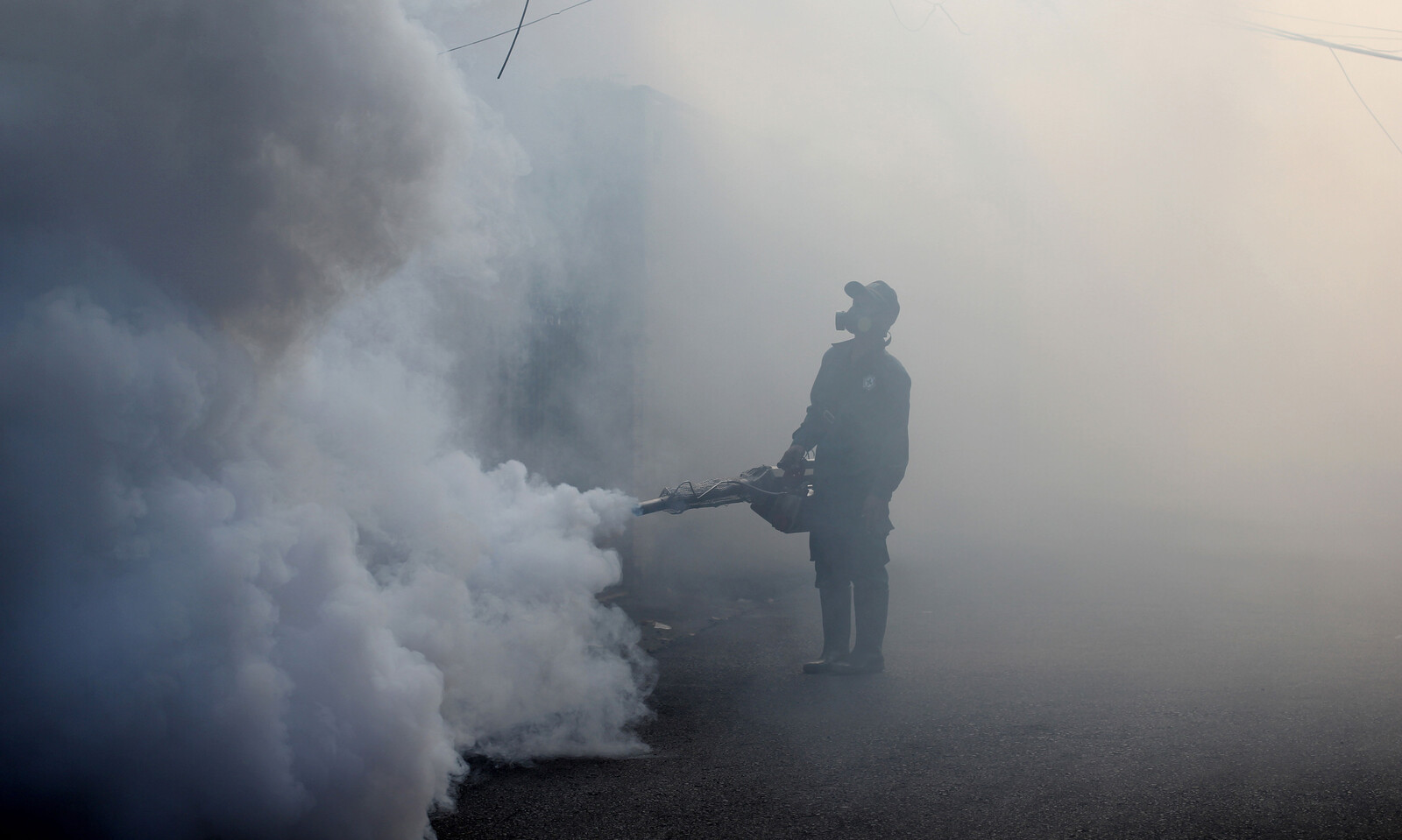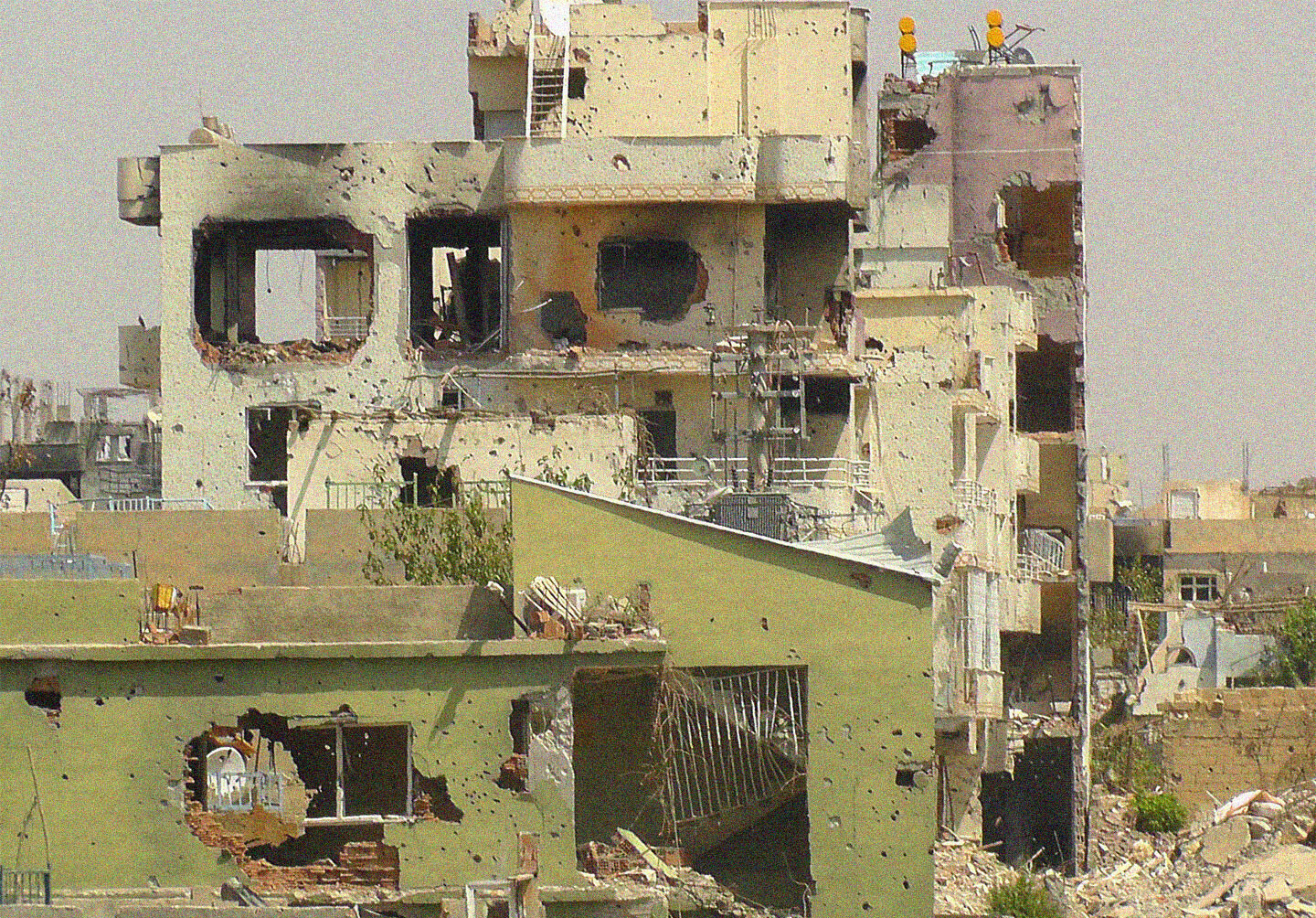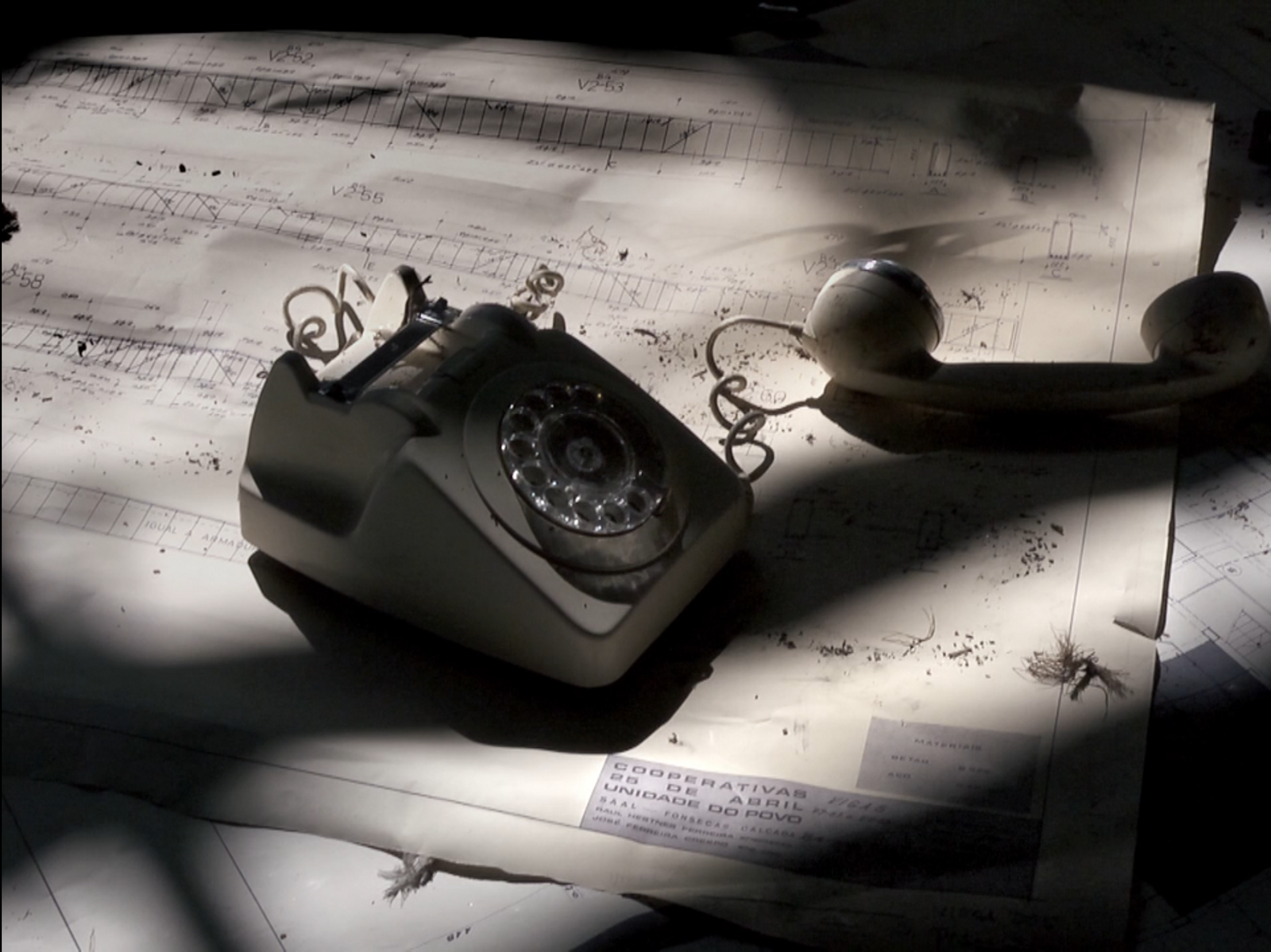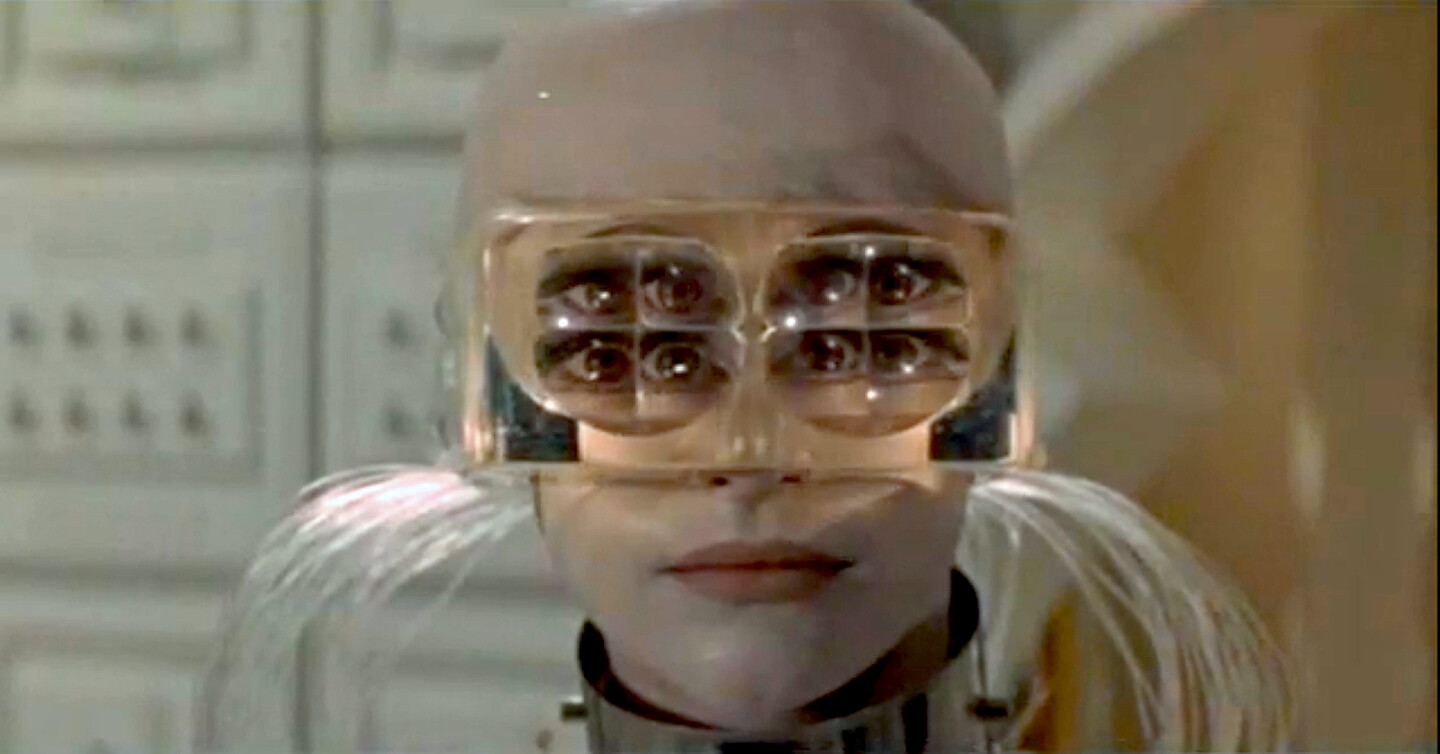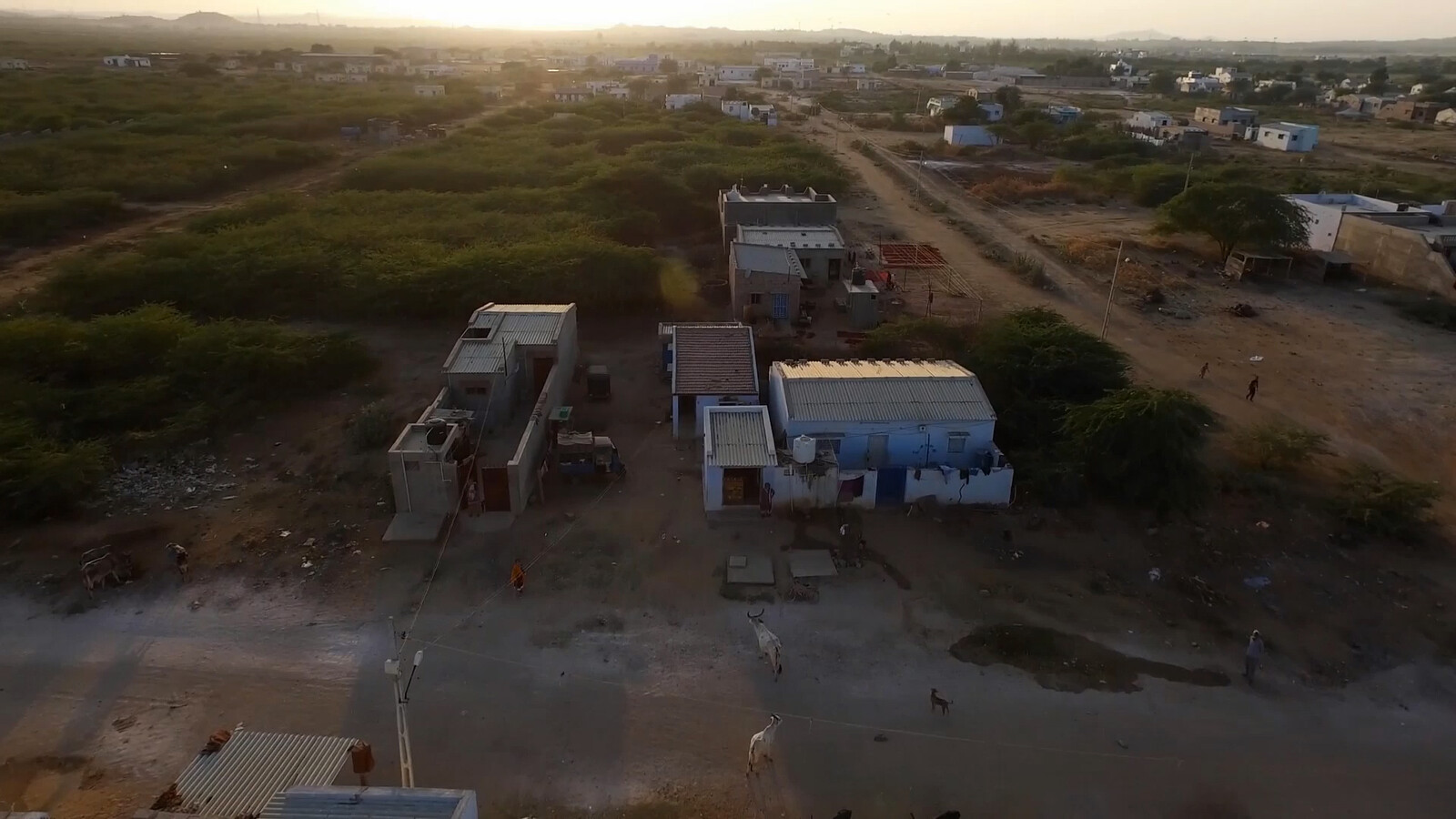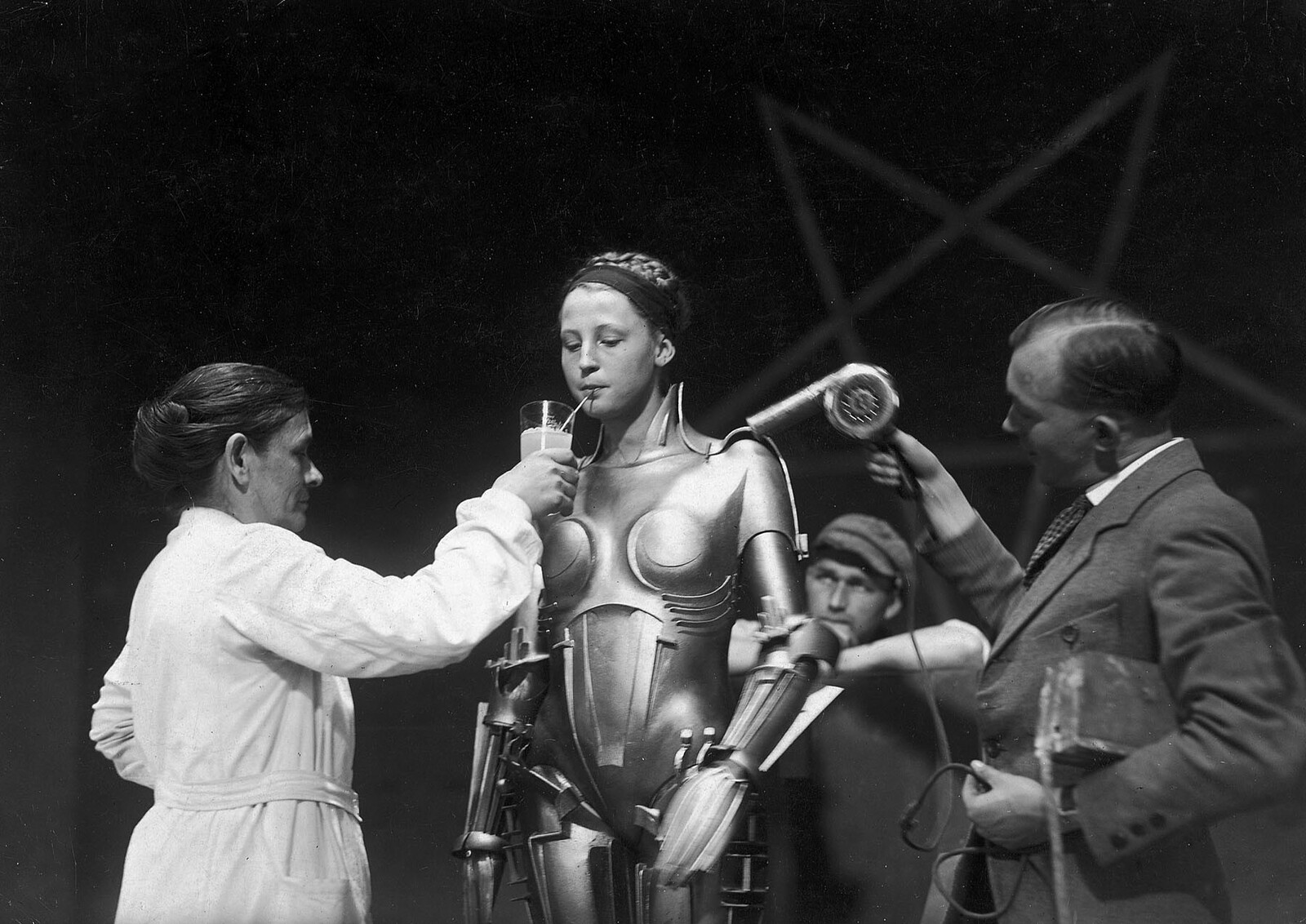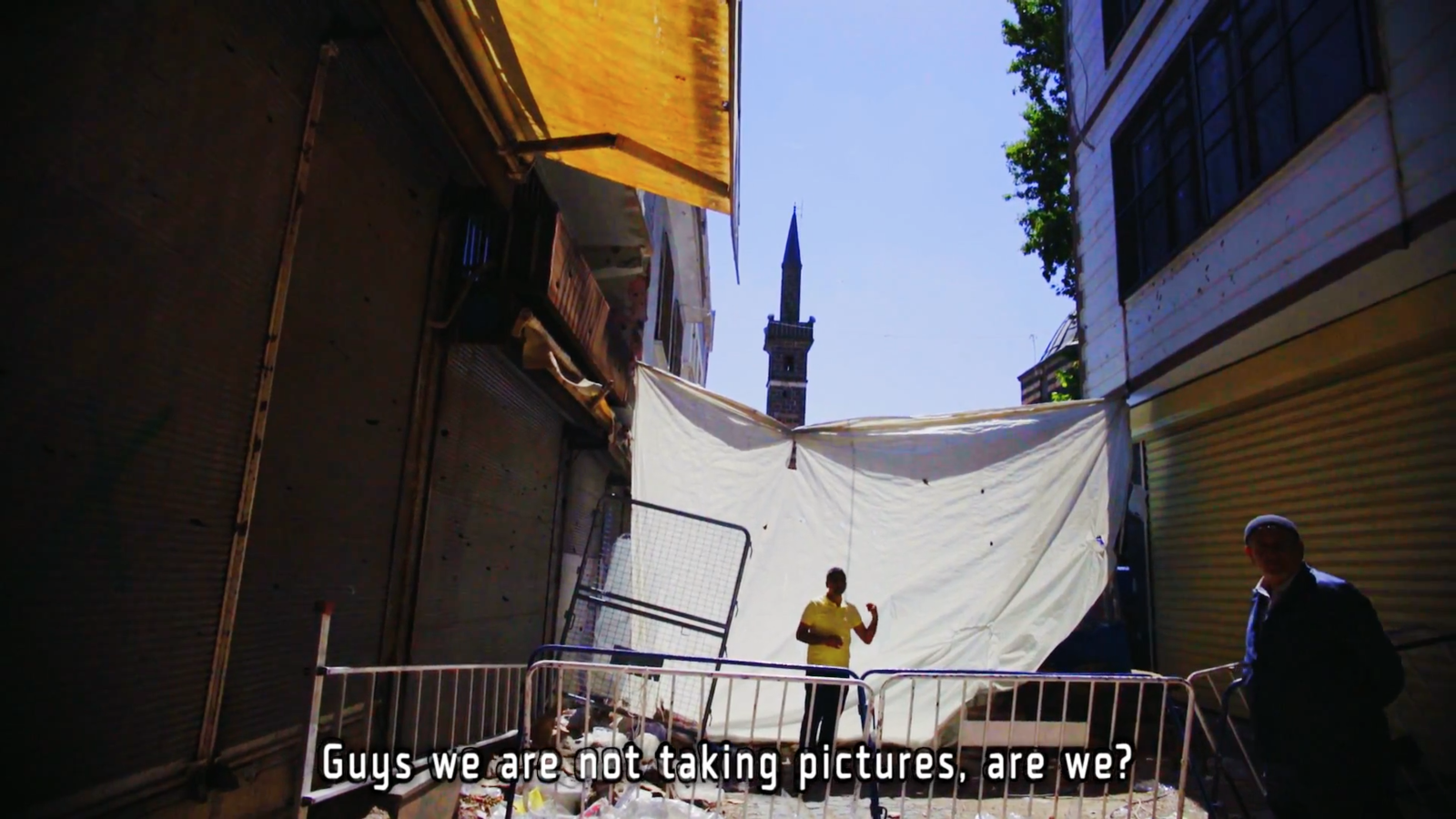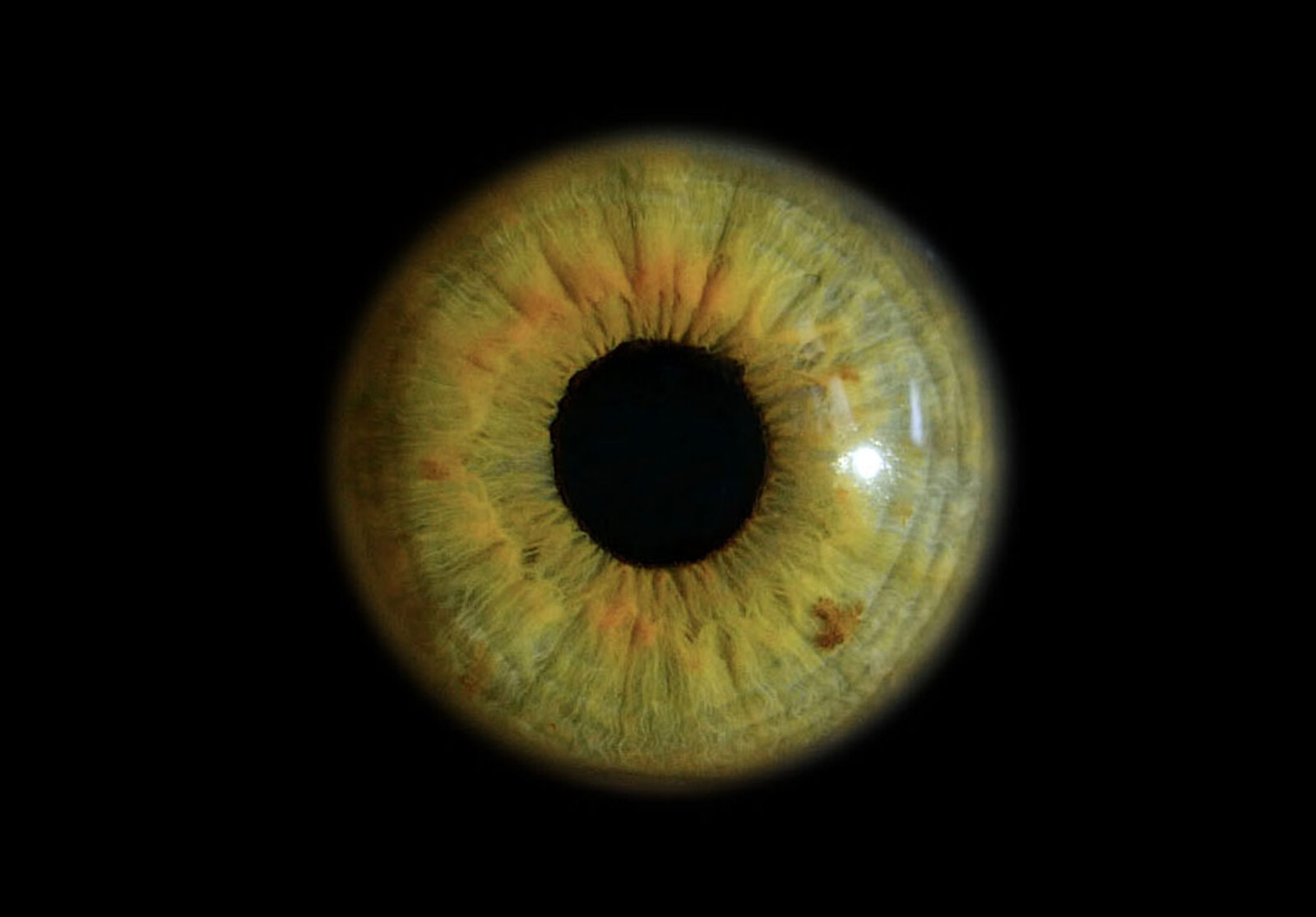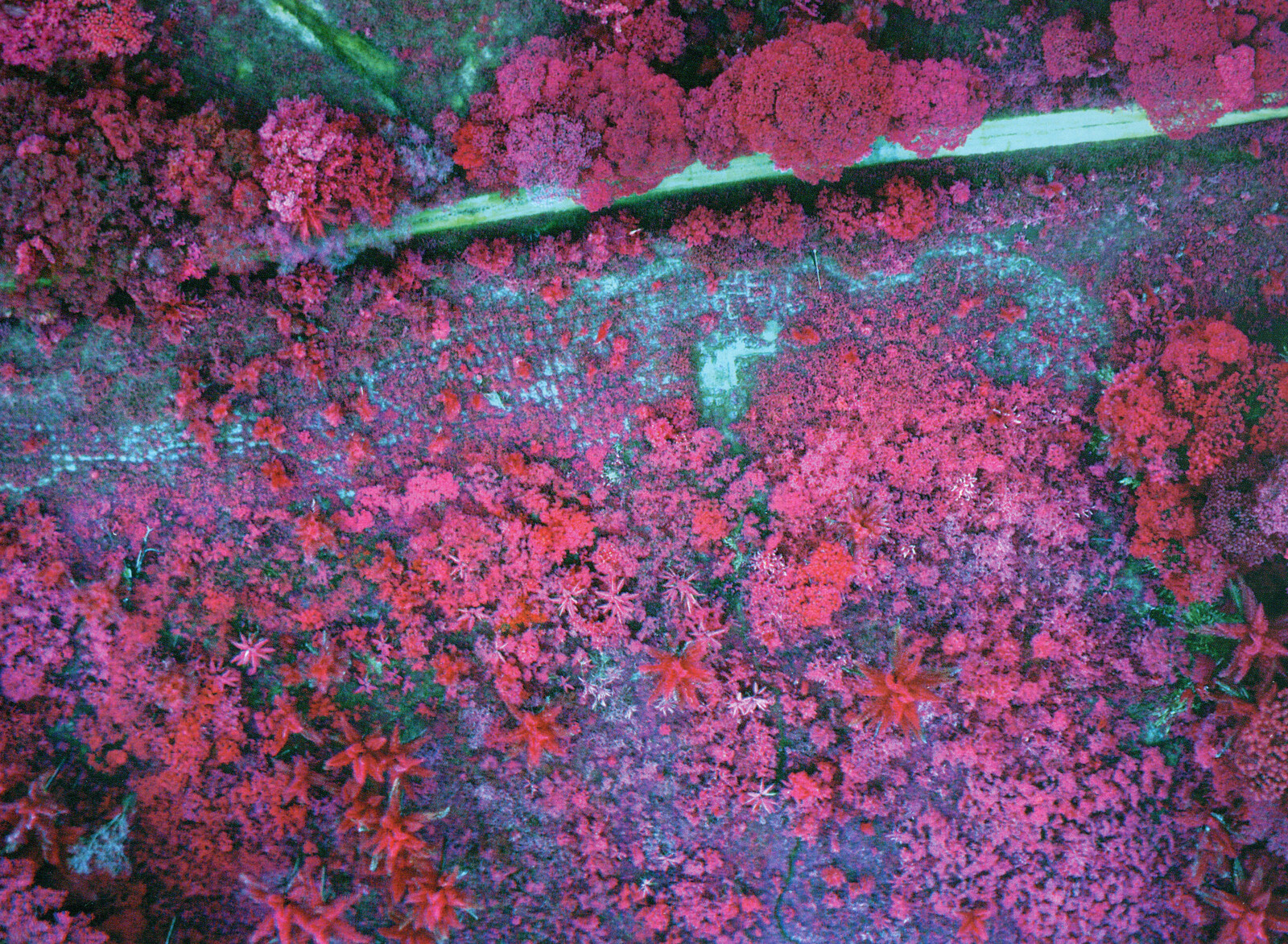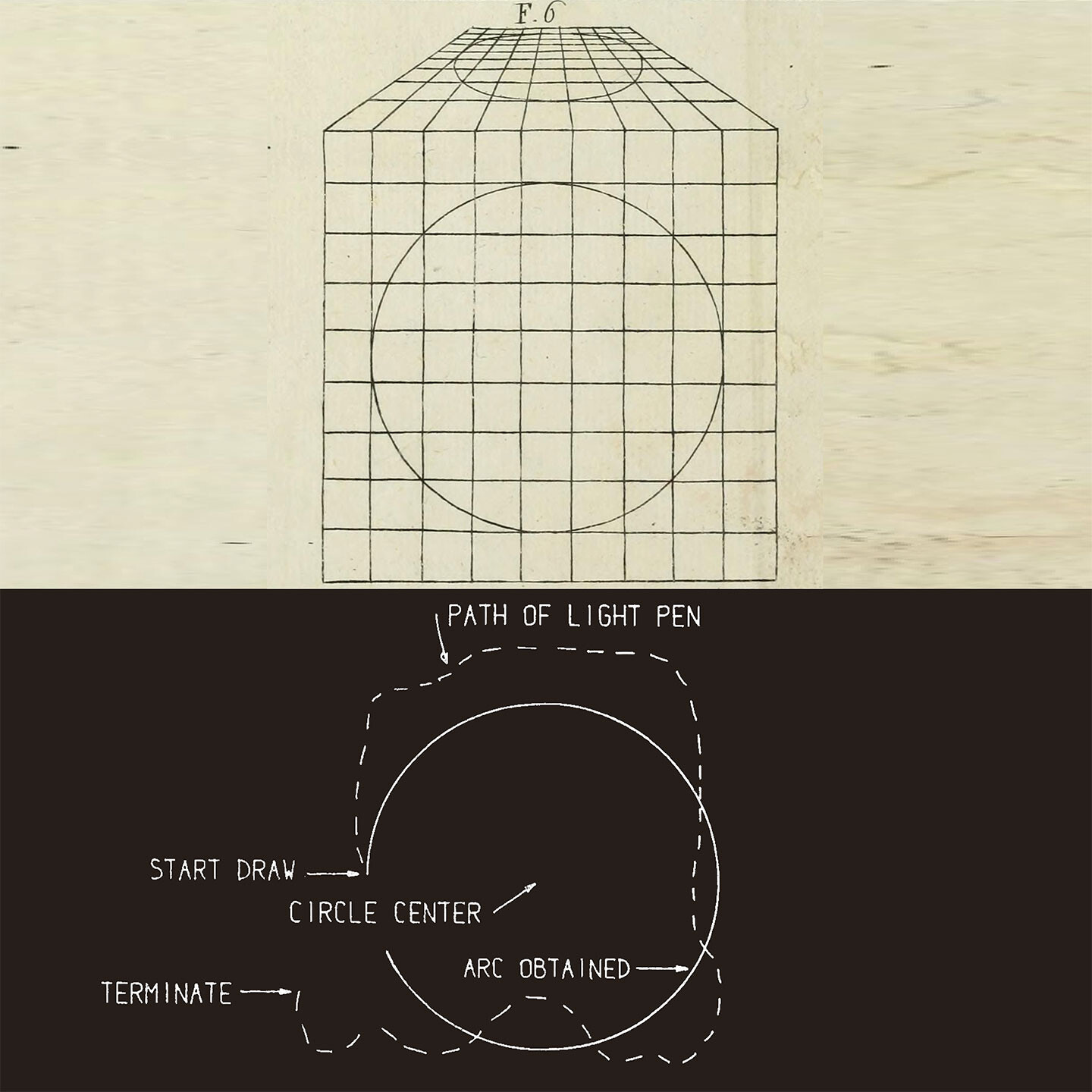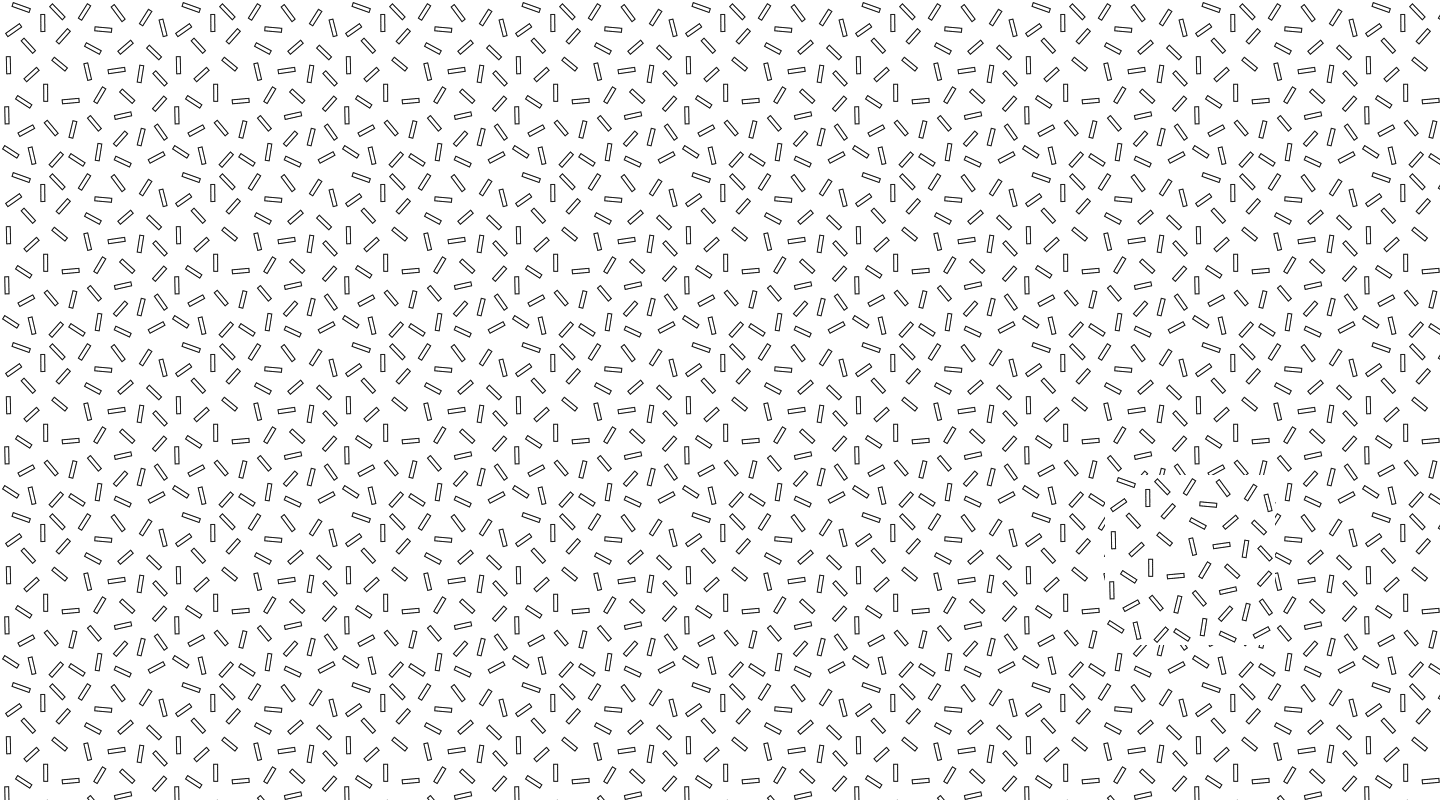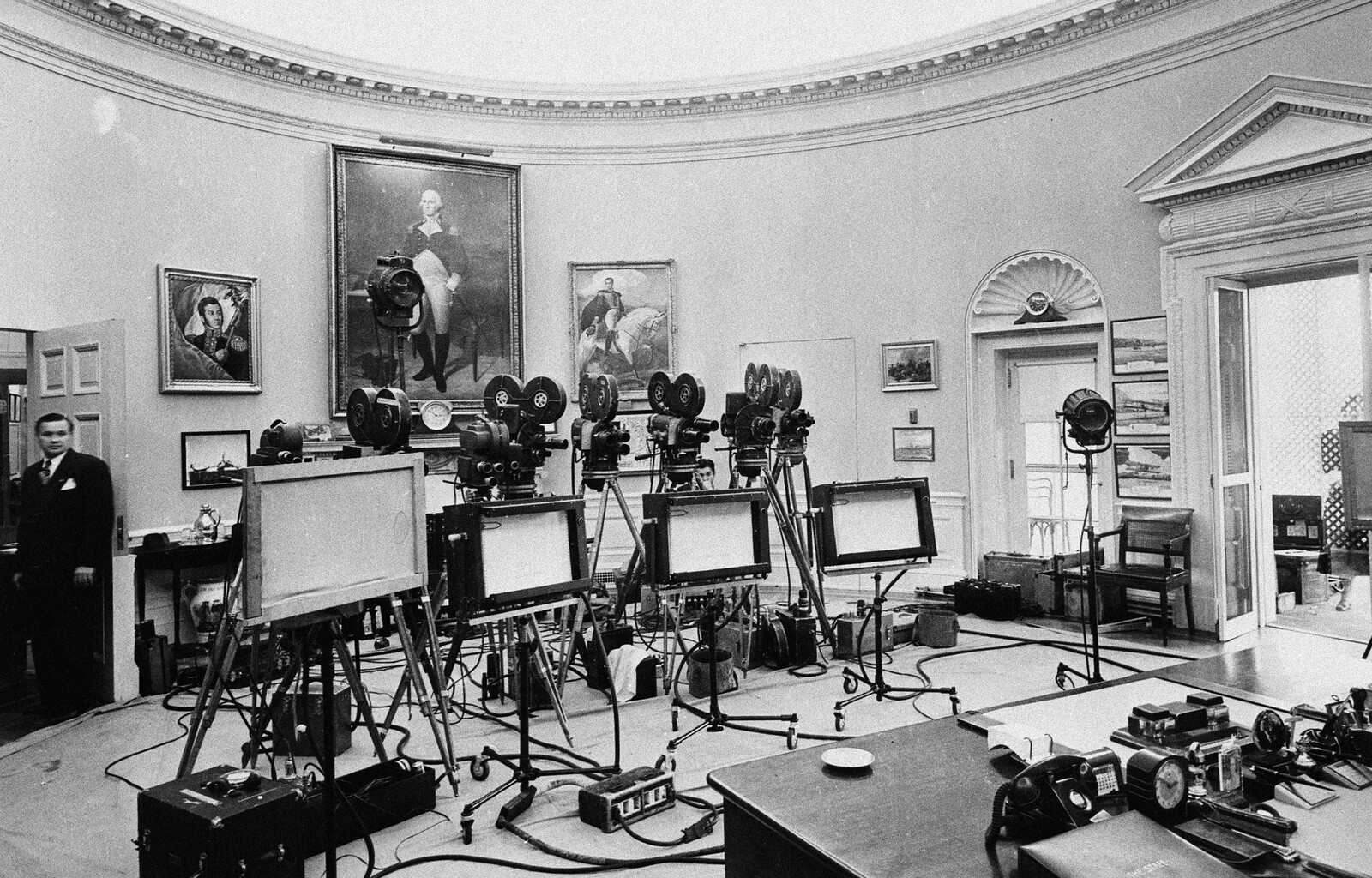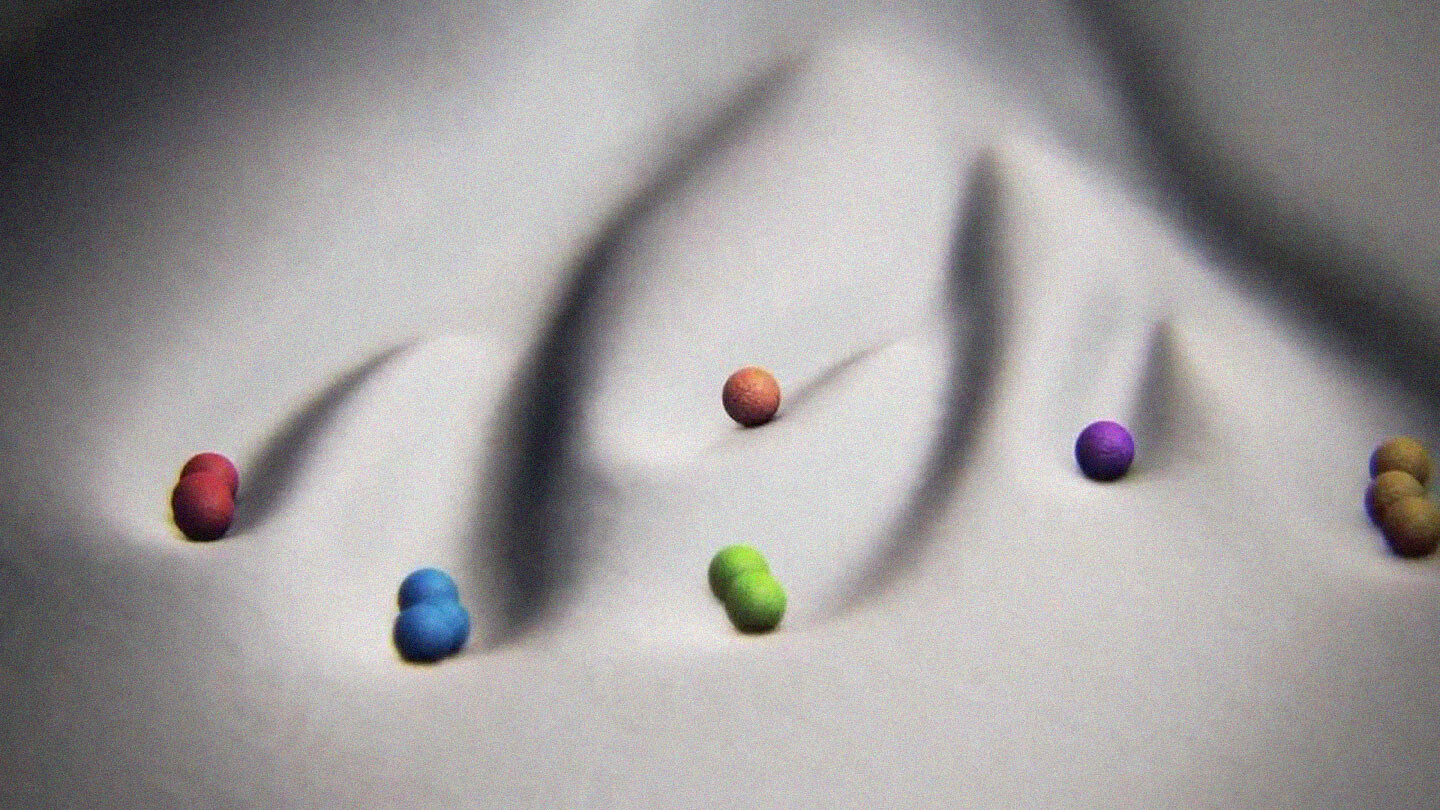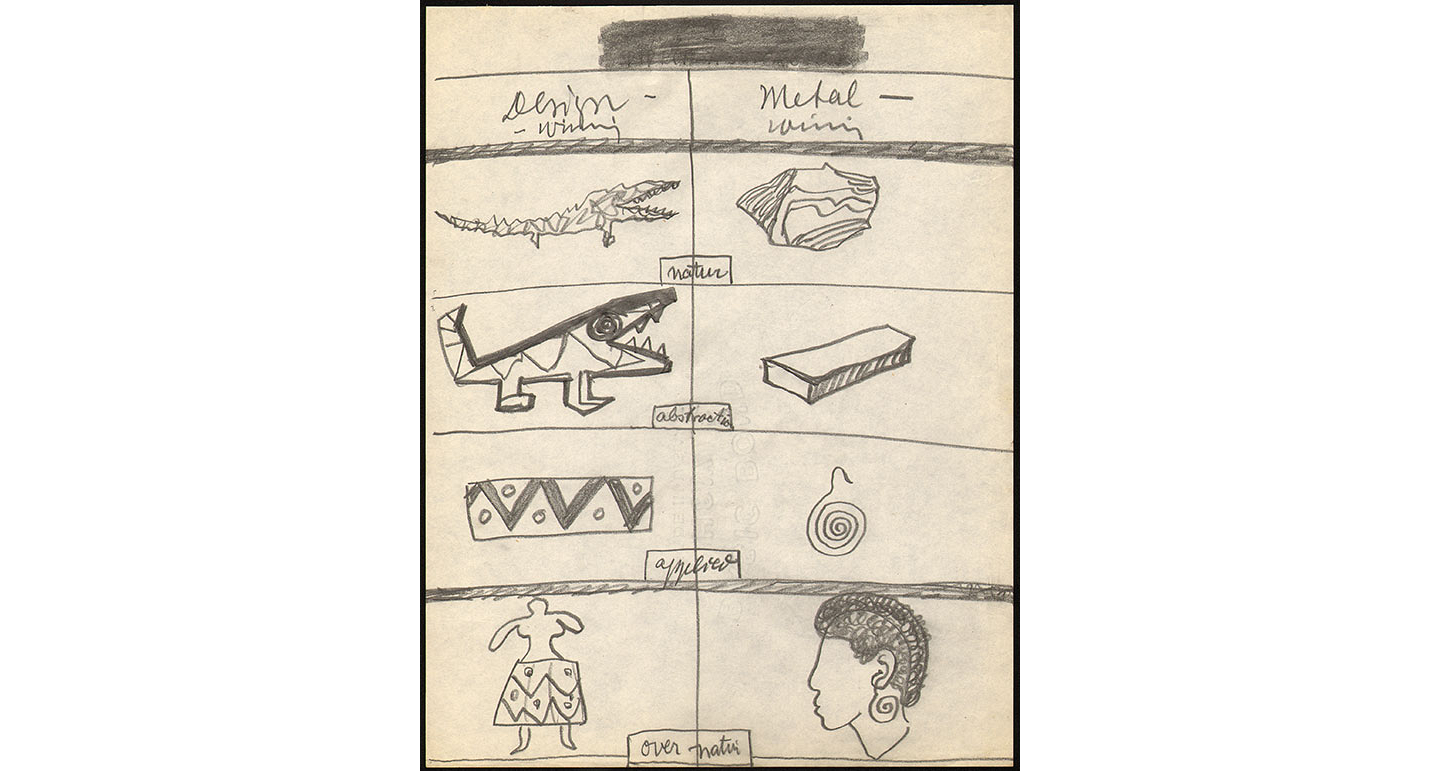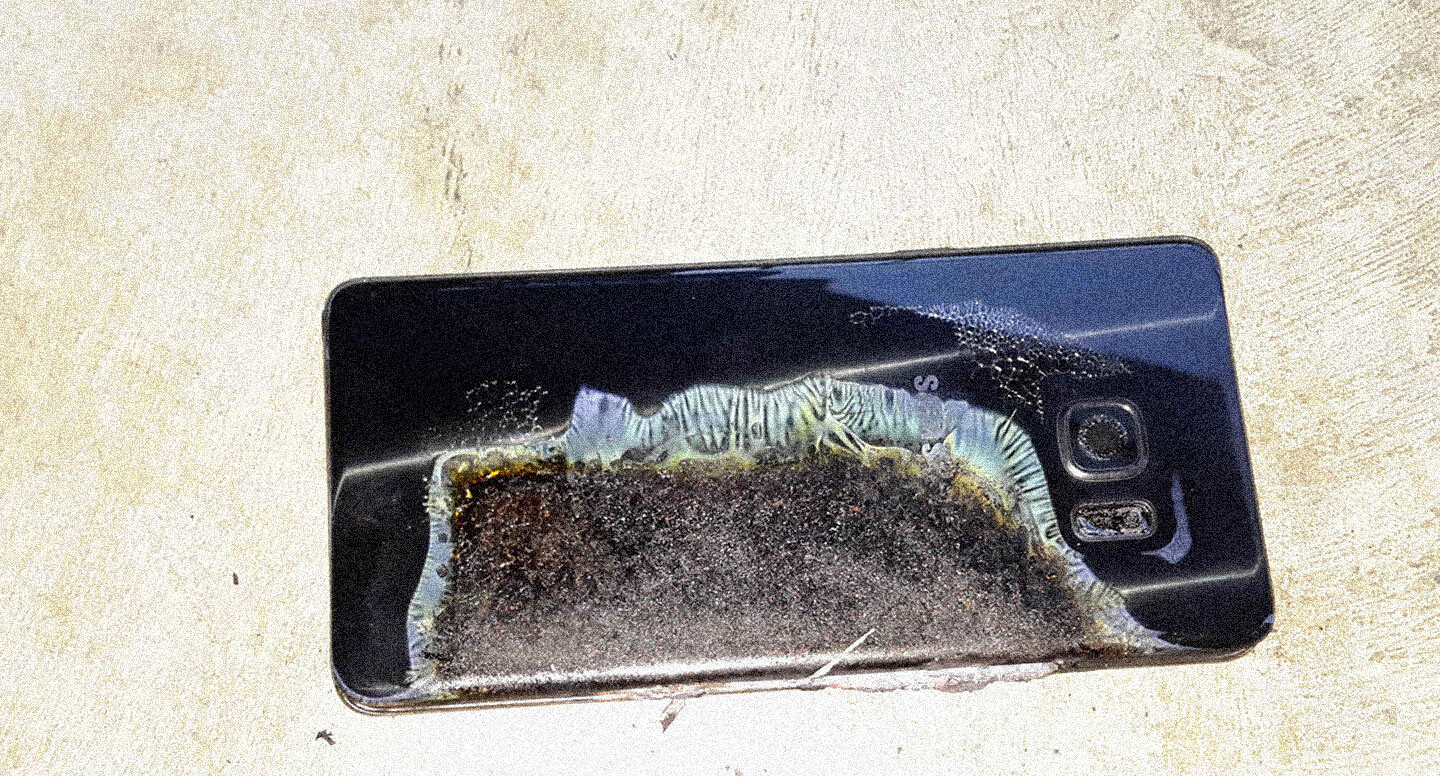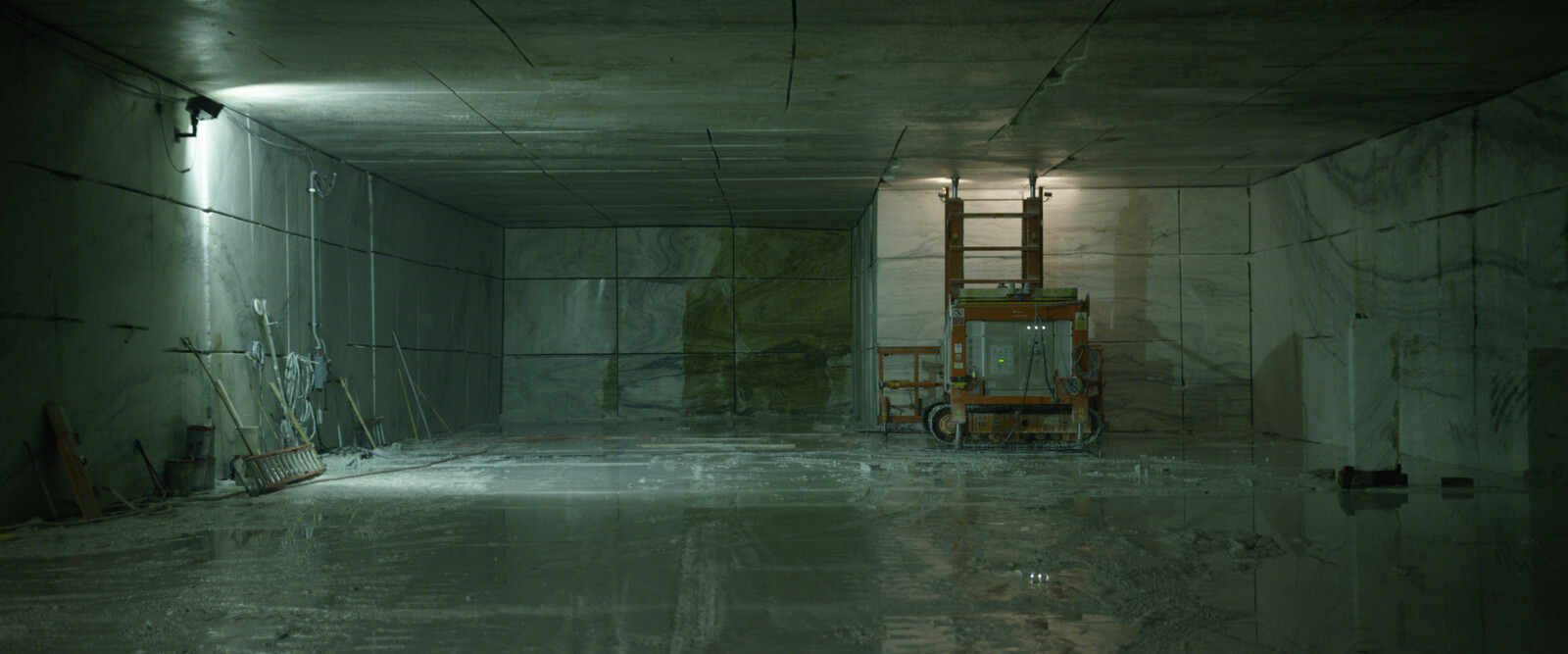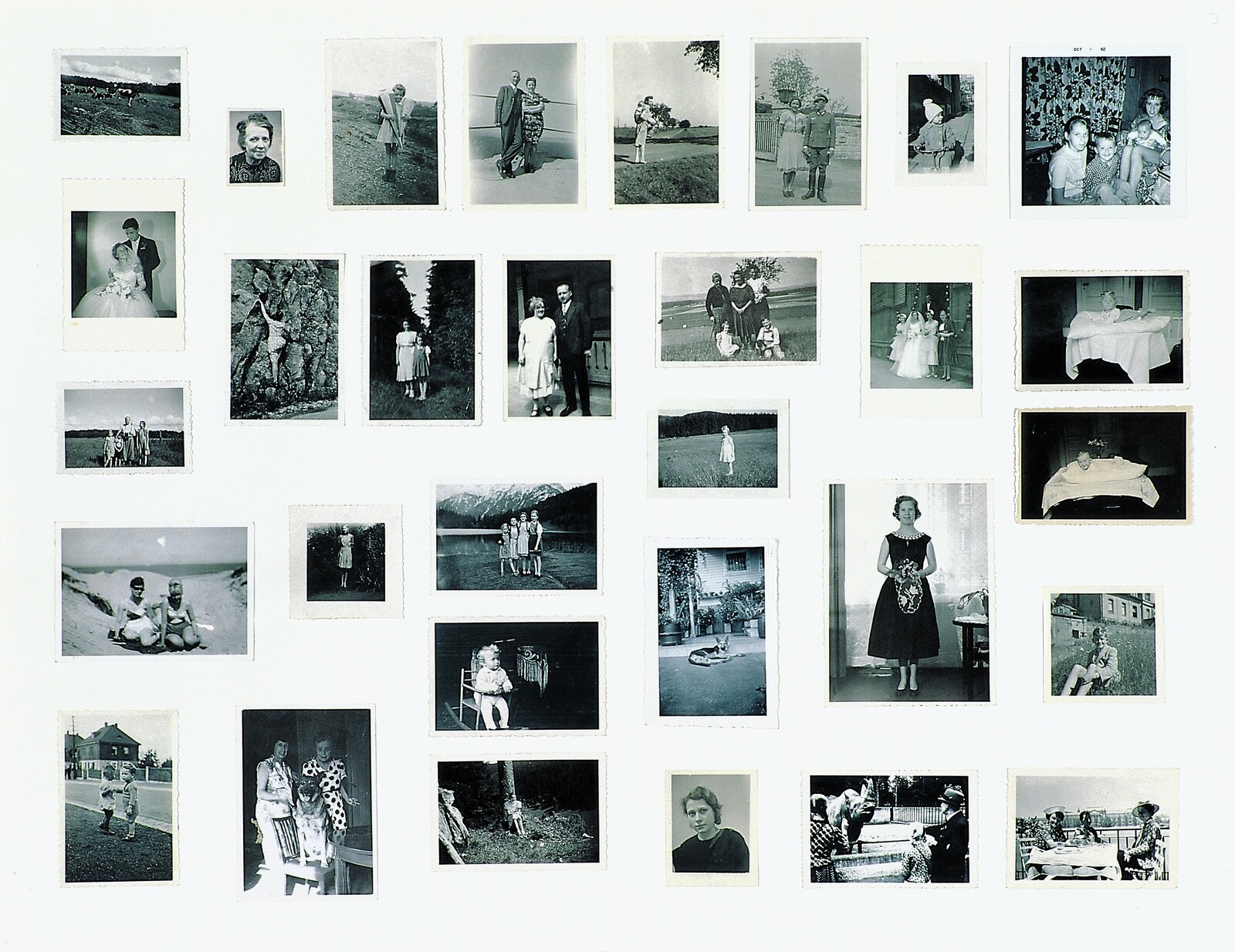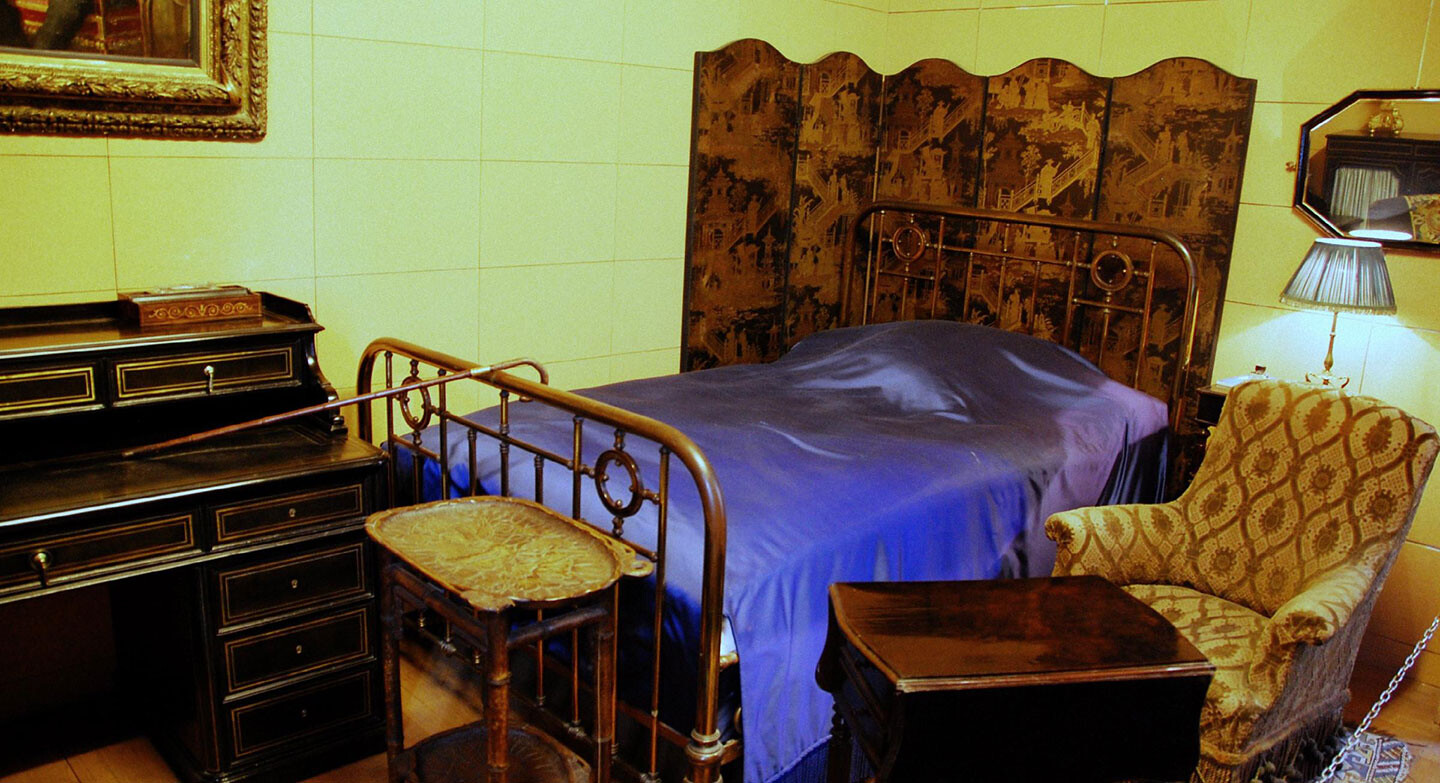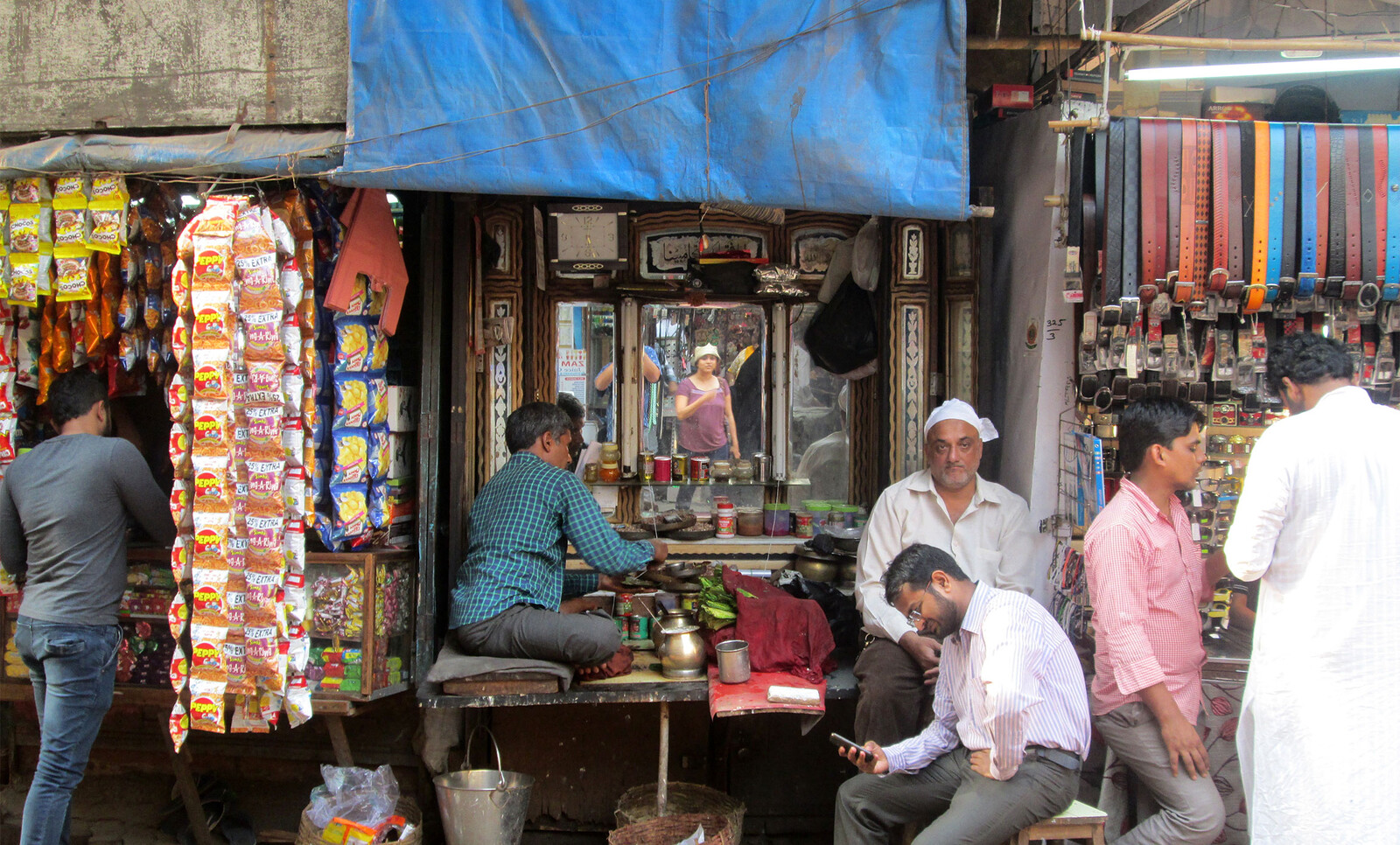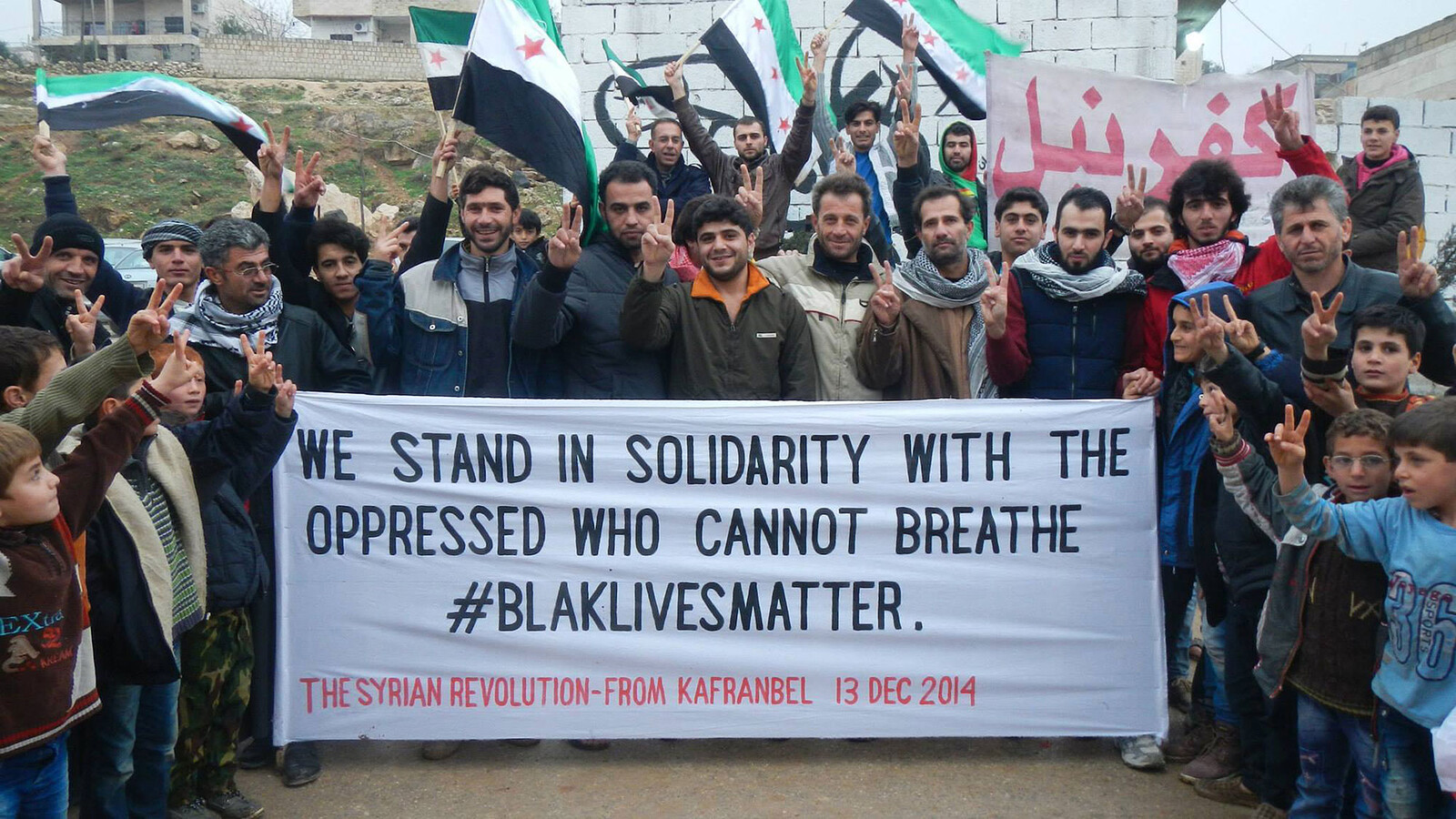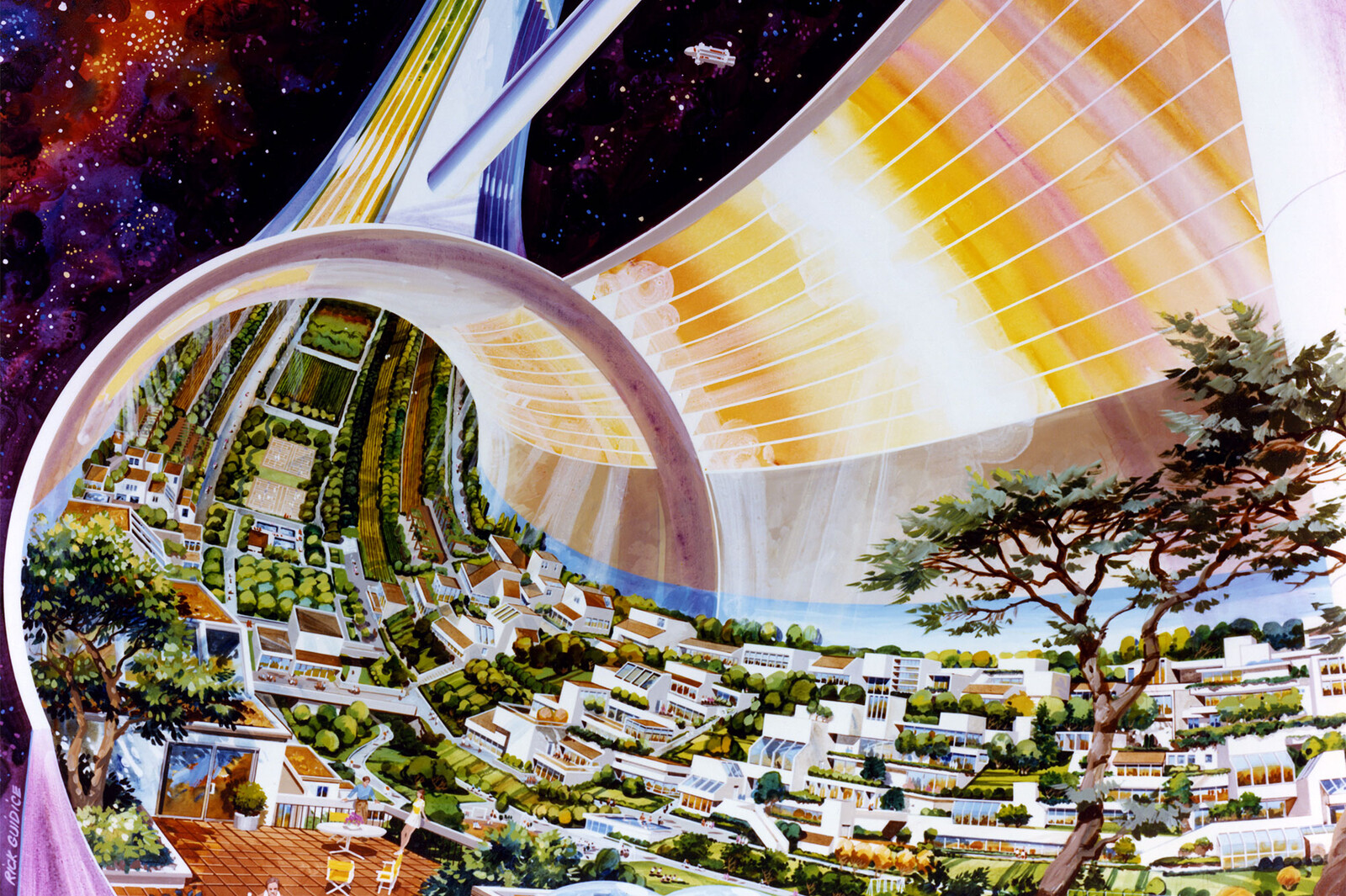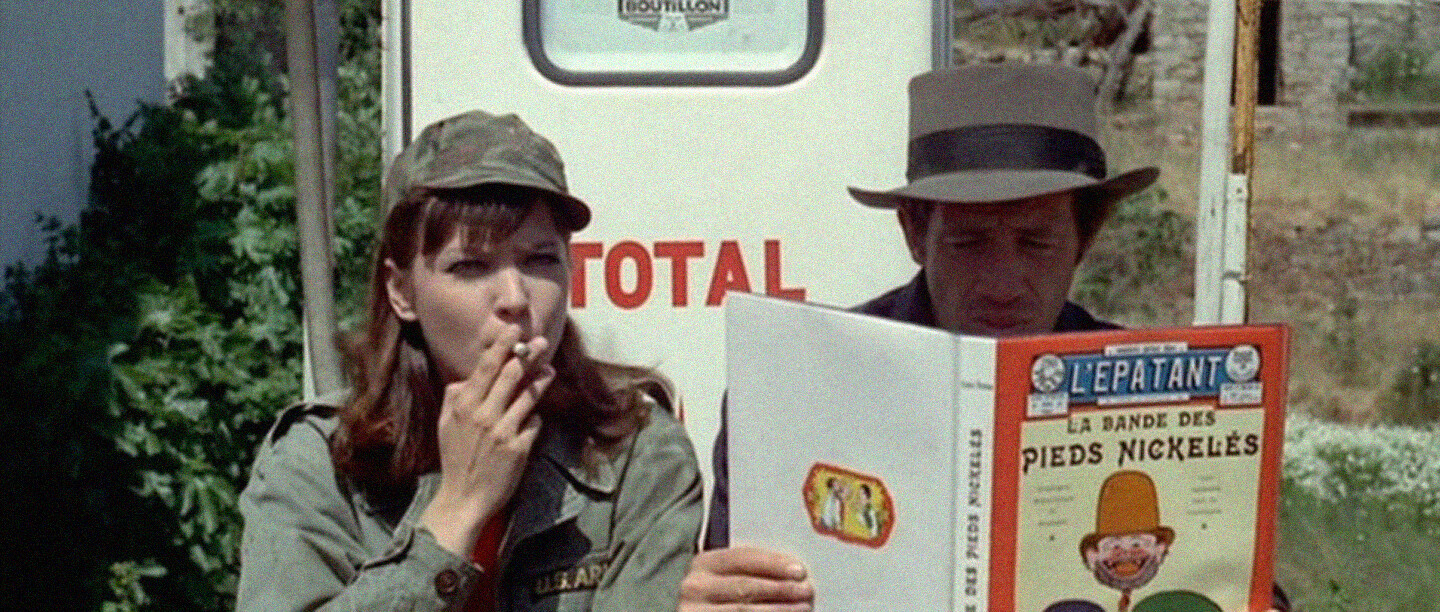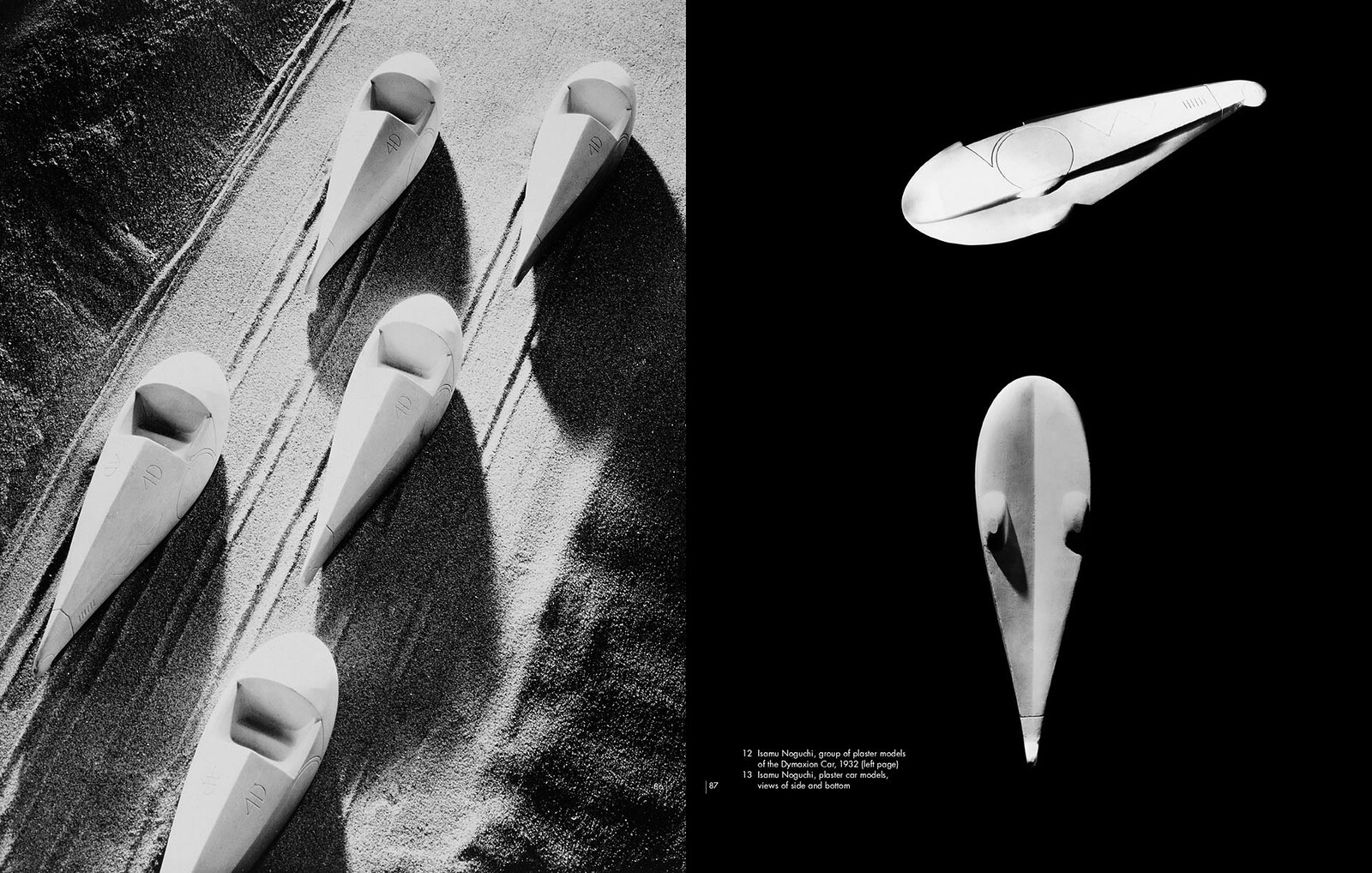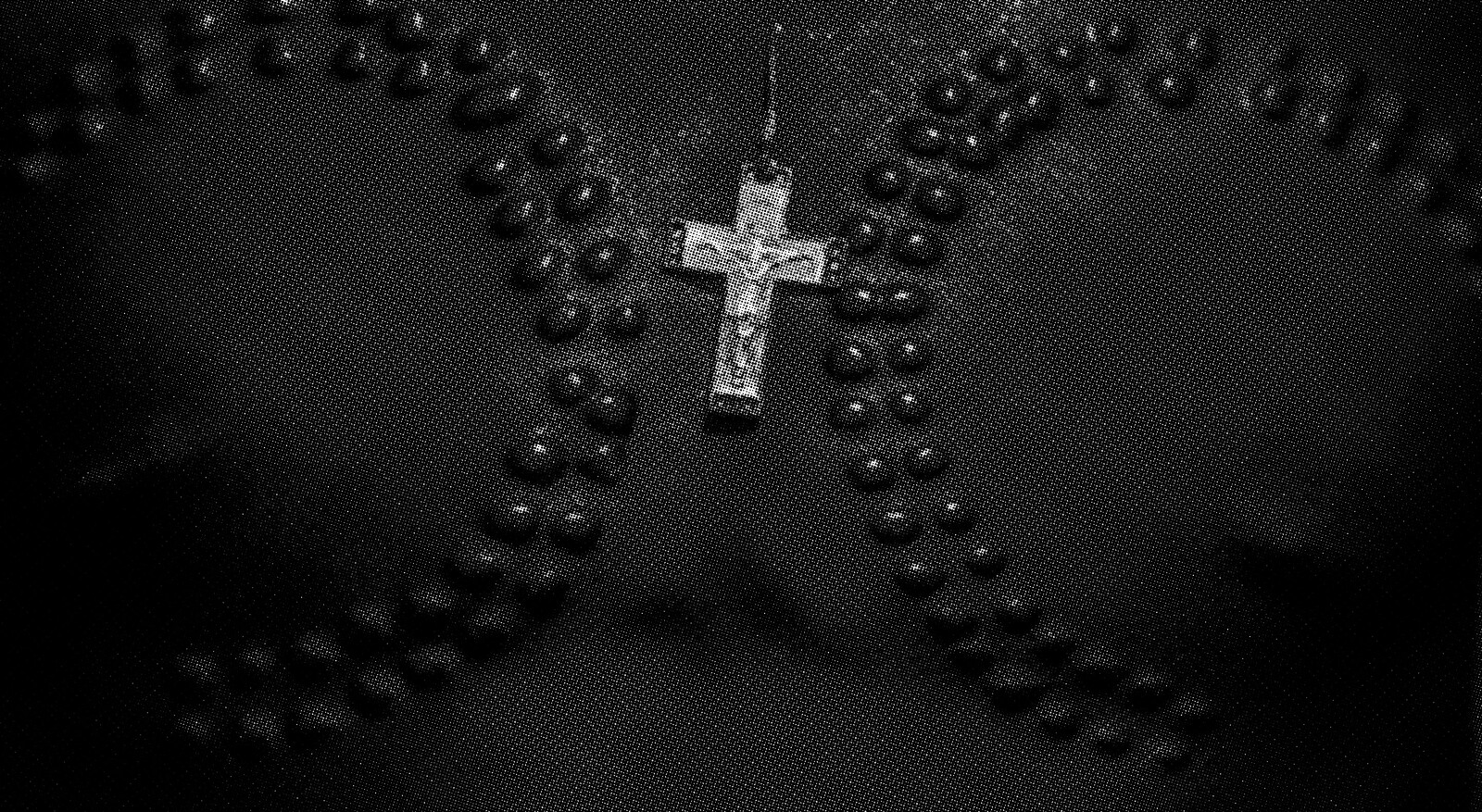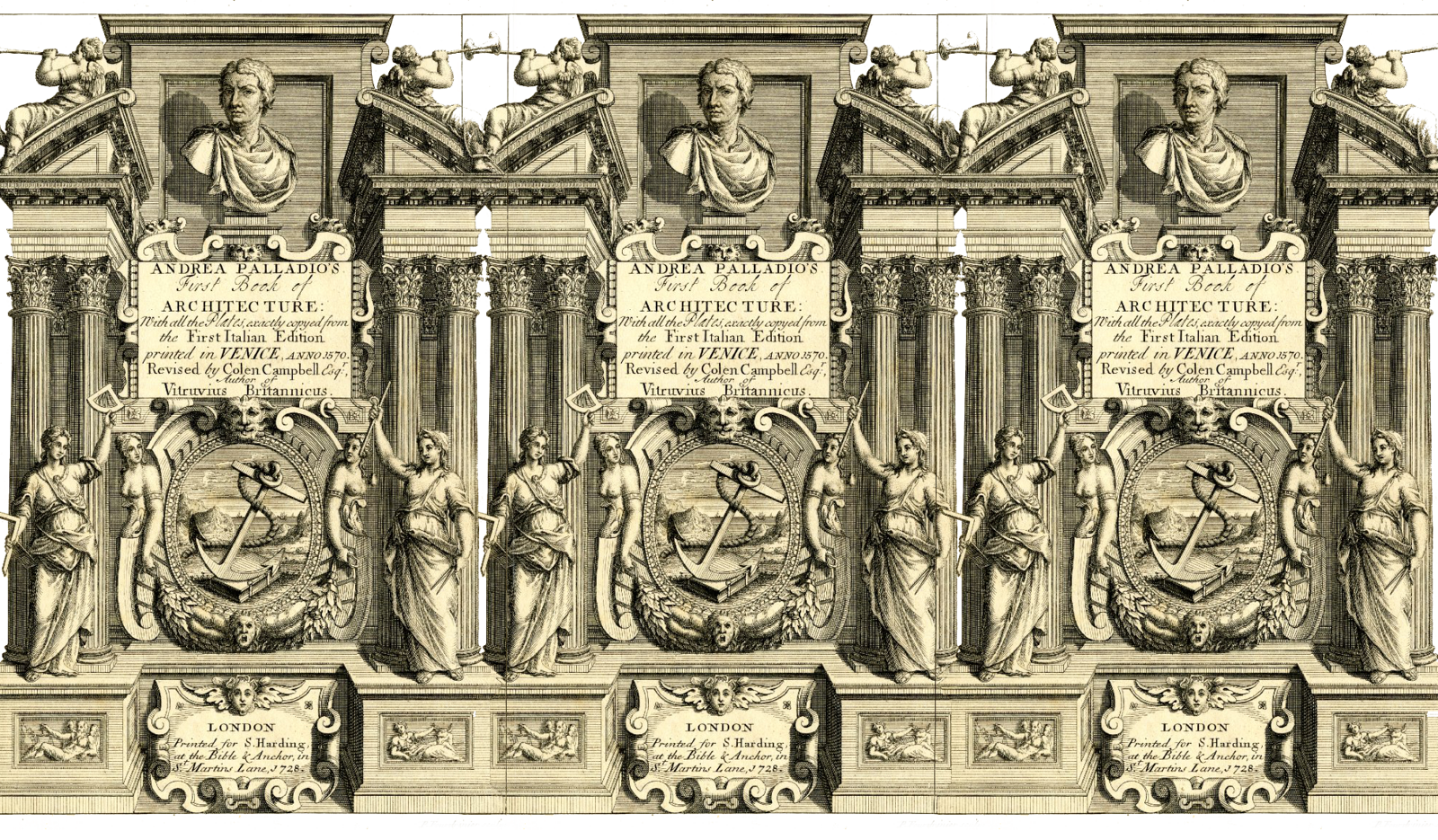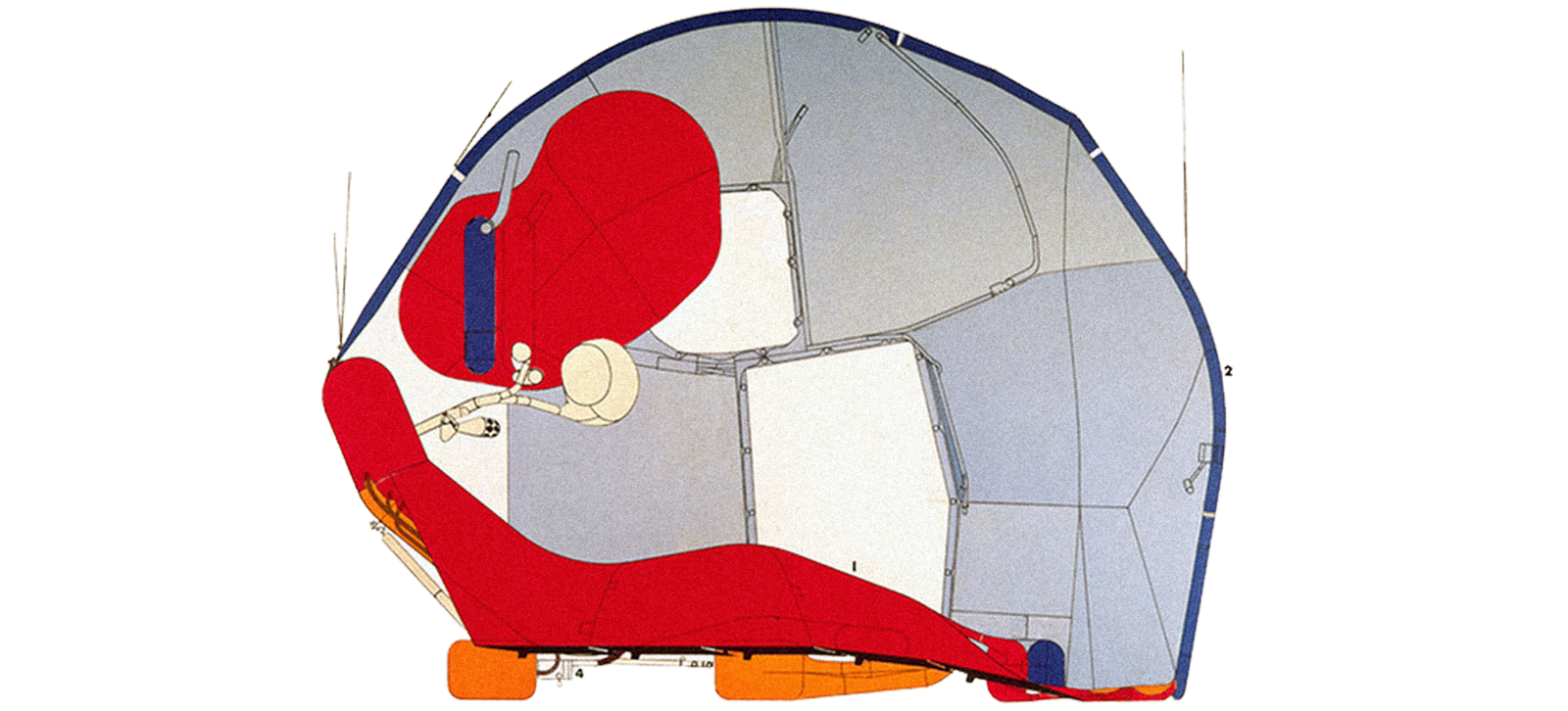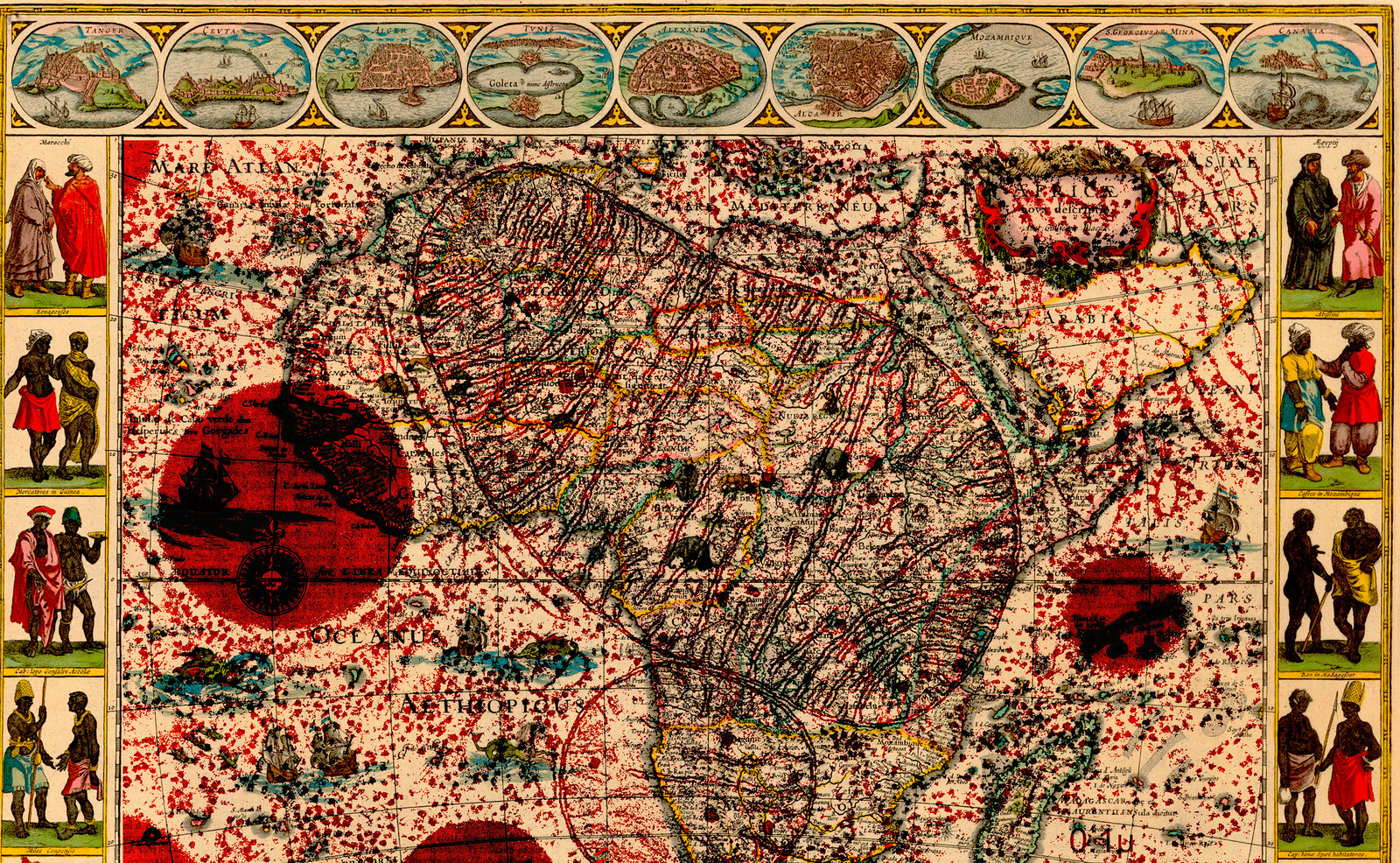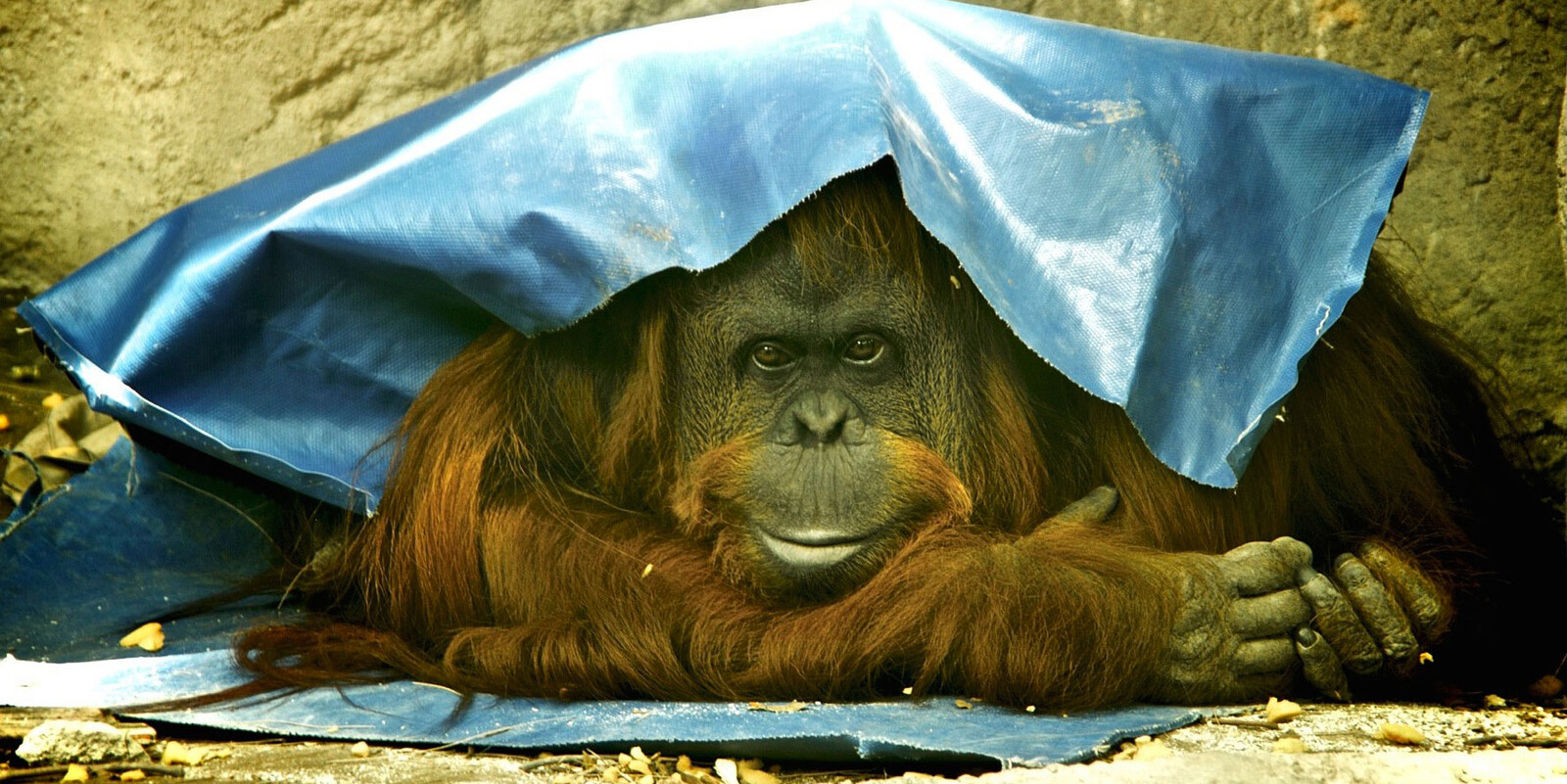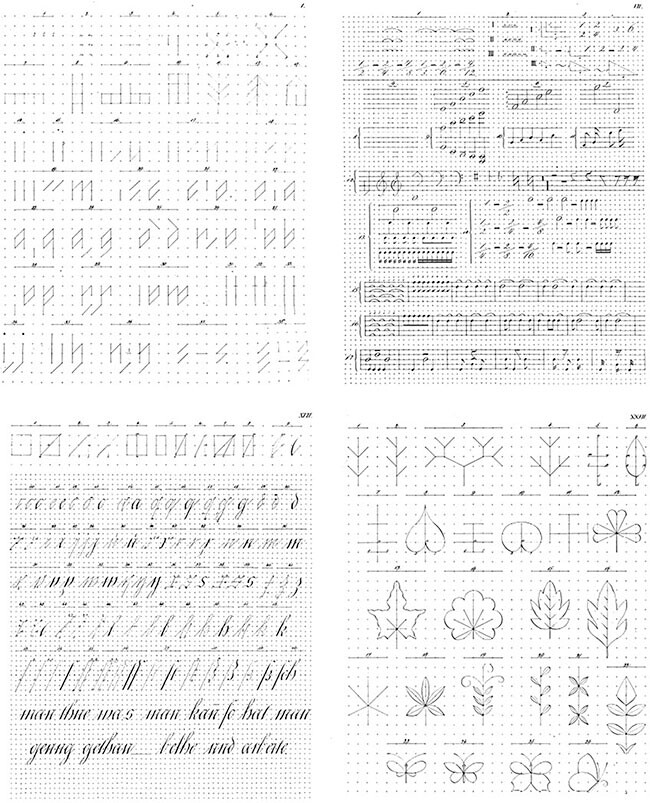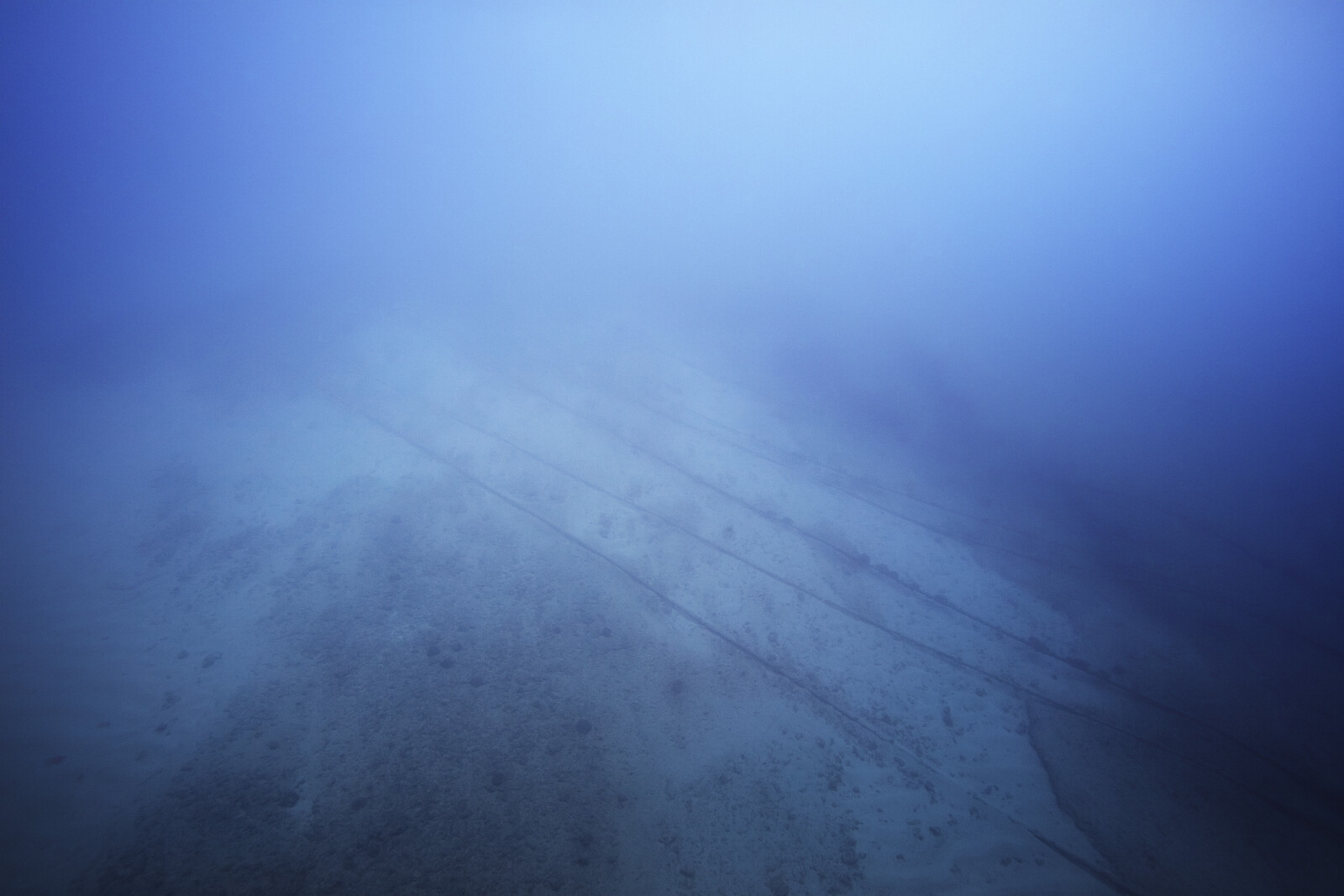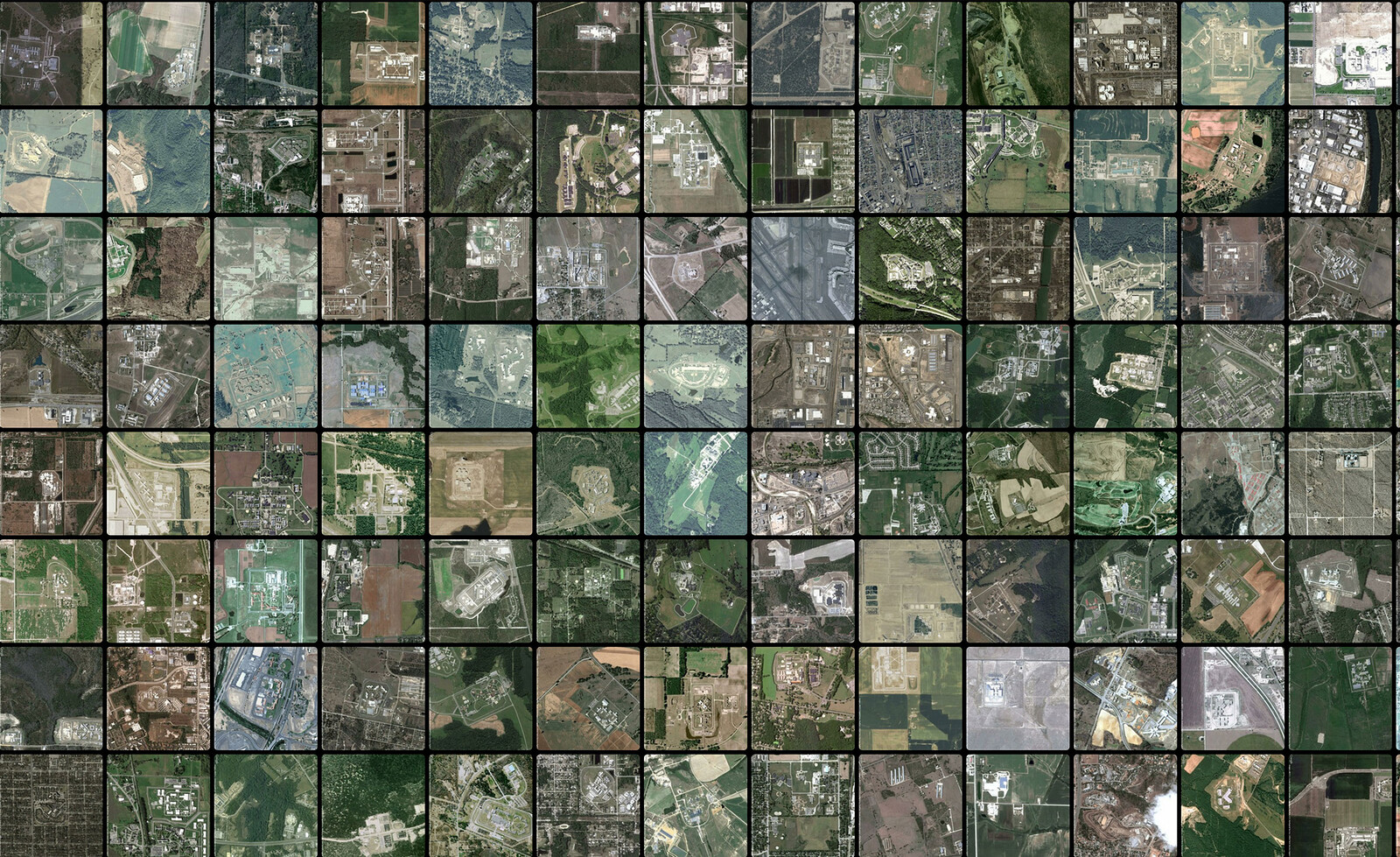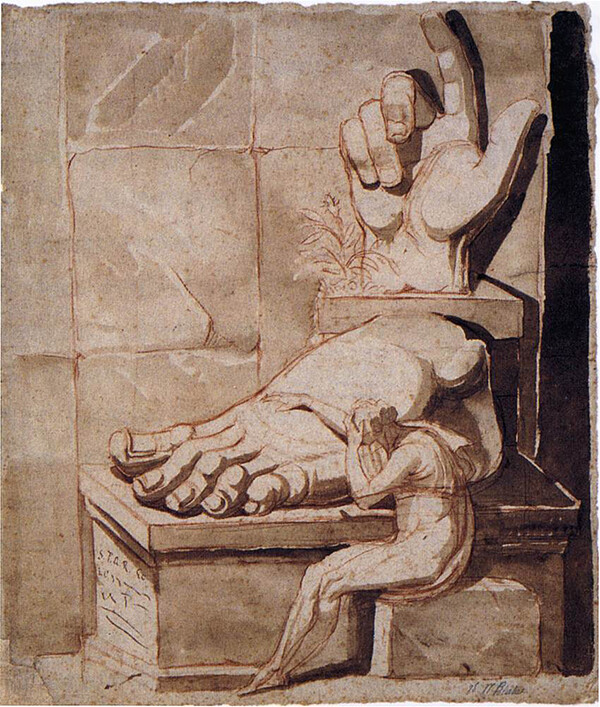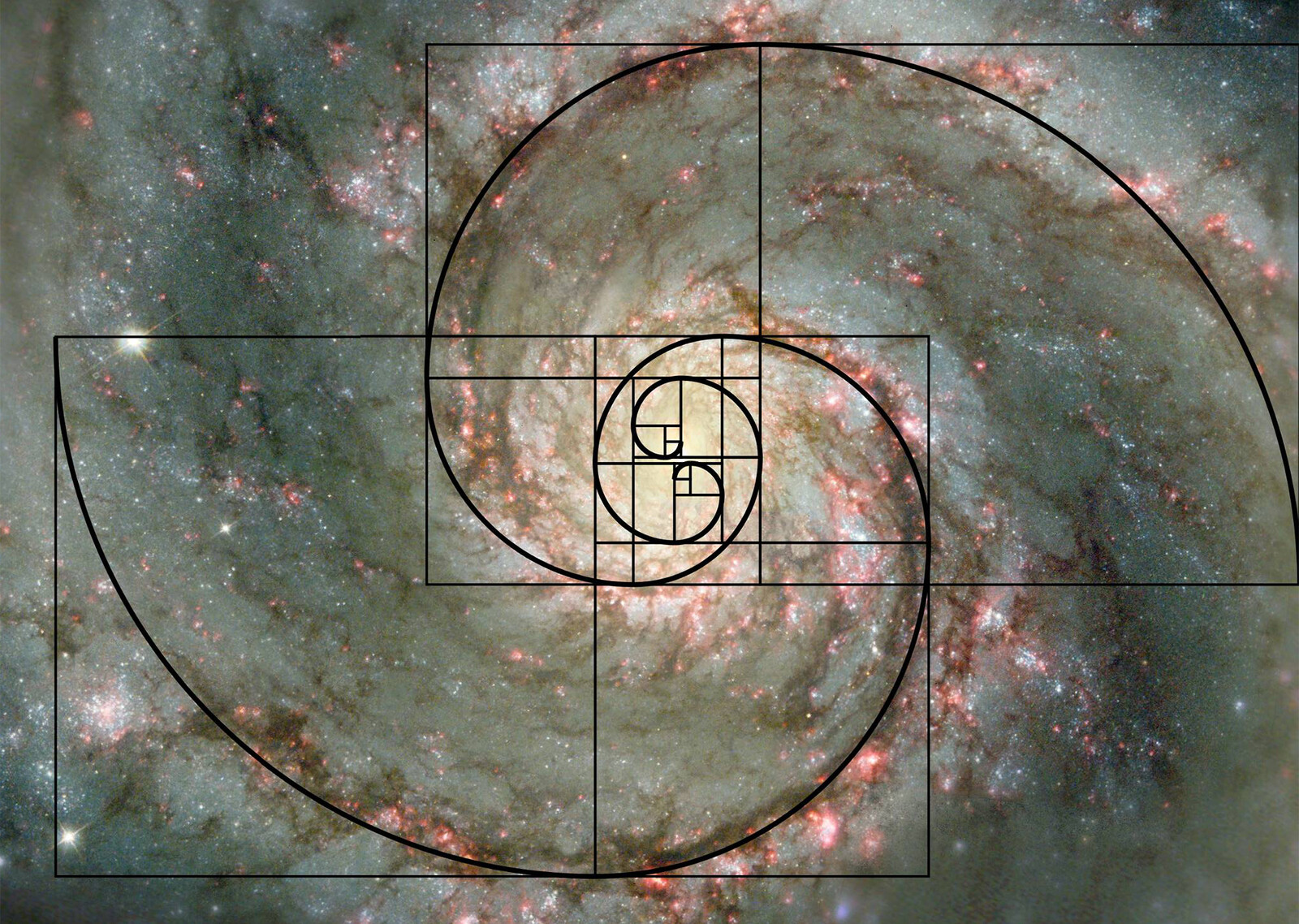I was thinking of a book, but I didn’t like that idea.
—Marcel Duchamp1Posthumous books are published, why not a posthumous show?
—Philippe Parreno2
Can an exhibition be a productive medium for thinking through, and not just a kind of pedagogical illustration of extant ideas? Certainly there have been works of literature, art, and music with such magnificent ambitions, and intellectuals who have attempted to articulate the philosophy of, say, the novel, modern music, or cinema. Consider the case of Jean-François Lyotard. At the very peak of his fame in the mid-1980s, Lyotard, one of Europe’s most prominent thinkers, staged an art world intervention. He did so with essentially a short piece of writing and one major exhibition. The essay “The Sublime and the Avant-garde” appeared in the April 1984 issue of Artforum, just as he was also preparing Les Immatériaux (The Immaterials), a sprawling, pan-historical installation at the Centre Georges Pompidou in Paris. His intention with the exhibition, Lyotard explained, was to produce “unease” in the viewer.
Lyotard’s massive project swept in during an exciting moment in continental philosophy, when the ways in which one might “do” philosophy were being radically rethought. A decade earlier, Jacques Derrida had proclaimed the end of the book, and in Différence et Répétition, Gilles Deleuze stated that the “search for new means of philosophical expression … must be pursued today in relation to the renewal of other certain arts, such as the theatre or the cinema.” Lyotard shared Deleuze and Derrida’s overtures to other media, but there is something quite original in his own wild texts from this period. These were not really books, but experimental and open-ended projects. Lyotard stressed the need to render philosophy visual—not only in the sense of illustrating concepts with striking and sensuous images but also through spatialization, in a way reminiscent of Mallarmé’s famous throw of the dice. Perhaps the recent English translation of Lyotard’s first major book, Discours, Figure is evidence of a new interest in his attempt to reinvent philosophy through confrontations with art.3 He was not happy with this book. What it ought to have been, he suggests, is a dislocated body, where fragmented speech could be joined together in various ways. “A good book,” he stated, is “a book the reader could dip into anywhere, in any order.” A good book, Lyotard seems to say here, is not a book at all, but an exhibition.
More like an environment than a traditional exhibition, Les Immatériaux was a scenography, an informational space or interface where objects, sounds, projections, music, and texts conveyed an image bordering on an “overexposition,” as Lyotard says, drawing on Paul Virilio’s concept of the “overexposed city.”4 Unlike the nineteenth-century world exhibitions, the aim of such an overexposure was not to project a sense of newness and amazement—not to simply affirm the seductive power of the new—but rather to trigger a “reflexive unease” in our relation to things that we already dimly sense.
In a conversation with Hans Ulrich Obrist, Phillipe Parreno recalls visiting Lyotard’s exhibition:
Les Immatériaux was an exhibition producing ideas through a display of object in space. It was very different from writing a book or developing a philosophical concept. And that’s precisely what I loved in that exhibition, that it wasn’t a conceptual exhibition. I learned later that Lyotard wanted to do another exhibition, Resistance. “Resistance” isn’t a good title. You immediately think of a series of moral issues. But when I met him, I understood that he meant in fact resistance in another way. In school when you study physics you are told that frictional forces are not important—the forces of two surfaces in contact let certain axioms become uncertain. I think that’s what Resistance was to be about.5
Wittgenstein never made an exhibition, and neither did Adorno, nor Heidegger—thank god. Lyotard was the first major modern philosopher to make this leap, though others would follow. Les Immatériaux was an ambitious experiment concerning the impact of information technology on human life and the ways in which the exhibition format itself might become a spatial practice of philosophy. The exhibition, which contained scientific instruments, technical devices and works of art, has often been seen as a celebration of information technology and a new postmodern world based on the immateriality of flows of information. But anyone willing to look a bit closer will discover that the underlying conception was far more ambivalent, not in the sense of some psychological hesitation on the threshold of the new, but rather as something inherent in the things themselves, most importantly because the very sense of thing and “thinghood” here was at stake.
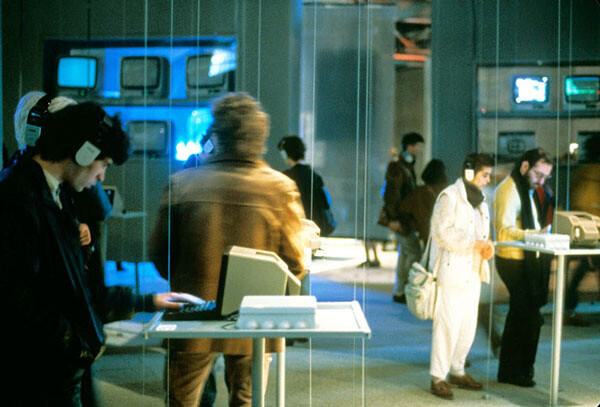

Exhibition view of Les Immatériaux, Centre Pompidou, Paris, 1985.
In fact, a sequel to be titled Résistances was planned, and would have dealt with the underside of communication, noise, distortion, and the dimension of experience that resists both consciousness and language. This part was never completed, and what remains are only the accounts of participants in Lyotard’s seminars.6 It can however be understood as aligned with the direction in which Lyotard’s own research was moving at the time, away from the postmodern as a universe of messages and codes, and once more approaching the idea of touching, of the event, and what he called “passibility” (neither an activity nor the simple passivity of receiving, but rather—in continuity with the central theme of Discours, Figure—a “donation” as something fundamental and originary). The 1985 exhibition must then be seen in conjunction with this second project that never took place, which of course is a tenuous proposal; we have no way of knowing what it would have looked like, and any claims about it must remain conjectural. Nevertheless, if one wants to continue the line of thought sketched out in 1985, it is important to note the element of indeterminacy that is inherent just as much in immateriality and ideality as in matter and its various cognates. In this perspective, the celebration of various forms of dematerialization in the first exhibition was always paired with an attentiveness to forms of resistance, and perhaps the sequel was, at least to a certain extent, already present from the outset as a kind of undercurrent or possible counterpoint reading against the grain.
In many ways the proposals of Les Immatériaux retrieve the promise of indeterminacy of the early avant-garde of the twentieth century. While we seem to be faced with an infinity—and the experience of infinity as an abyss is a fundamental feature of Les Immatériaux as well as of Lyotard’s writings on the sublime—of possible modes of experience, this just as much produces anxieties and fantasies, precisely the kind of “unease” that the exhibition wanted to provoke: a loss of self, identity, and stability, a disconnection from the space-time of perception, from matter, materials, and materiality, from the ground in all senses of the world. The question is how to make such an unease productive, how to make it into the matter of thought, in all senses of the term; how to allow for the “foundation crisis” not to be resolved too quickly by appeals to either the synthetic constructions of techno-science or a naïve, sensory given, but to make the “unease” that it produces become a condition for an experimental thinking and making.
The philosophical task proposed by Lyotard, if we see Les Immatériaux and the conjectural Résistance together with the many essays and writings that surround the first project and may be understood as pointing to the second, is the question of how we can approach artworks that, while they at least from conceptual art onward actively resist traditional modes of aesthetic enjoyment, nevertheless do not just amount to a withdrawal of sense or sensibility, but rather open up to a restructuring of the sensorium that allows representation and its underside to enter into a new constellation that would be in tune with the mutations of our present space-time. For this, the term “postmodern” that Lyotard at one point suggested was perhaps a deceptive one, since it tends to enclose us in the schemas of cause-effect and before-after that his thought on the temporal knots of presence precisely took as its task to undo. Something similar must of course be said of all claims to locate the mutations of our present. For who would claim to know what the present is, what its limits and possibilities are? Just like any other temporal category the present is only given in anamnesis, through a rewriting and working-through; Les Immatériaux was such an attempt, unfinished, incomplete, and even contradictory, which is why it still demands to be not only thought, but also continued.
In its experimental layout, Les Immatériaux intensified the reflection on the exhibition as a form of communication, as an interface that need not limit itself to the presentation of objects, but can expand into a kind of immersive space.7 Immersion should however not be understood as the intoxicating and overpowering space of the Gesamtkunstwerk, but rather as an exploration of differences and discontinuities that have already begun to inhabit our sensorium; it directs the subject back to a space for reflection and questioning, not only of what is there to be seen, but also of what it means to see, and of who is its subject. Thus, the prying apart of the subject and its faculties not only occurs on the level of thematic content, but just as much on the level of the exhibition layout as such, which on several level works to achieve a kind of parallelism of multiple sensory and cognitive events.
A show curated by a ghost: From the point of view of communication, Lyotard’s second exhibition would probably have focused on its obverse side: noise, loss, scrambling, and disorder; all of those facets of experience that offer a resistance to transmission. Beginning in the physical sense of resistance (as in the resistance produced in electric circuits), the theme may obviously be expanded to cover all facets of experience, and it belongs to the indeterminacy that is inherent just as much in immateriality and ideality as in matter and its various cognates. Thus, even if the first exhibition can at first sight be taken as championing various forms of dematerialization, the attentiveness to forms of resistance was in fact present throughout, even though in an oblique manner—which is why one might assume that the planned sequel, at least to a certain extent, was already present in Les Immatériaux. What such an exhibition would have looked like in the mid to late 1980s must of course remain purely conjectural. But more importantly, the question that Philippe Parreno wants an answer to: What would it look like today?
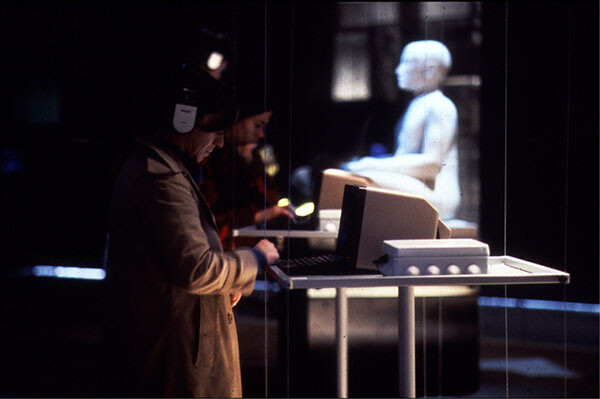

Exhibition view of Les Immatériaux, Centre Pompidou, Paris, 1985.
In hindsight, one cannot avoid noting that most of the technological inventions that appeared new and exciting in the 1980s have either become part of everyday life, and in this sense lost their capacity for producing both unease and thought, or, more alarmingly, turned into an increasingly hegemonic system of information and surveillance. All of this could be taken as simply an intensified version of what Adorno called the “administered world,” and one in which the techniques of administration have grown infinitely more subtle, insidious, and difficult to resist. In the world of global capital, where the ubiquity of information ensures that all thought is transformed into bits of exchangeable digitized units, identity and difference go together, and the unifying and leveling power of what was once called the “culture industry” have been replaced by a smooth production of differences, in taste, desires, lifestyles, and affective dispositions. Variation, specification, and infinitesimal penetration into the local are the forms through which capital works, and how it sustains its ordering and regimenting function on a higher level.
It is against this development that one could pit the insistence on zones of resistance to information: opacity, inertia, friction, physicality, all seem to offer other possible avenues, and the thinking of the sensible that Lyotard engages in his last writings. The sequel to Les Immatériaux could in this sense have amounted to a counter-statement, or to an obverse side that was already present in the first exhibition, perhaps even as the possibility of completing its trajectory in the opposite direction, from language to body, from the immateriality of information to a kind of resistant materiality that is inherent in information as such.
The first problem with such a countermove is that it inevitably—as we saw in many instances in Lyotard’s own writings—runs the risk of reactivating regressive ideas of art and drawing on what are in fact highly traditional ideas of painting in particular, which since the advent of modernism in the mid-nineteenth century has, for a host of historical reasons, been accredited with the potential for providing an alternative to technological mediation. While obviously not simply exhausted as such, ideas of touch, gesture, and the presence of color, together with many other similar moves that emphasize the irreplaceable here and now like in body art and performance, often function as integral parts of the system they supposedly dislodge, and in this they are akin to the movement of differentiation that is the other side of systemic control and may exert a compensatory function.


Exhibition view of Les Immatériaux, Centre Pompidou, Paris, 1985.
Such returns to the sensible can sometimes be uninterestingly conservative, in simply claiming that we need to regress to some earlier point in time. Others have a more complex agenda though, for instance as in theories of “obsolescence,” where the strategic return to technologies and mediums that are no longer considered up to date allow for a different take on historical genealogies without making any claim that we could return to the past without further ado. Both of these returns however share a focus on the medium, no doubt as an echo of a formalist legacy that can be retrieved in any number of ways, and yet remains caught in a theory of art and an aesthetic that begins by shunning away from the present. The convergence of material “carriers,” or at least their almost infinite variability—which was one of the basic claims of Les Immatériaux—poses problems that are unlikely to be addressed in a relevant fashion by reclaiming obsolete technologies. This is obviously not to deny the force, critical value or interest of any particular form of artistic practice, but rather to note the complexity of the problem of resistance, which, as already the classical formulations of information theory show, is a necessary part of transmission (and not something that would form a radical outside). It would seem that Lyotard poses the problem of countermovement, but then, as he moves away from the seemingly celebratory stance of Les Immatériaux, somehow ends up being trapped in his own examples, which limit the force and scope of his philosophical claims.
Secondly, if we begin with a theory of resistance—which must also be thought as a resistance in or to theory itself, if we follow Lyotard’s mediations on passibility, the event, and other related concepts—that takes its cues from the physical features of circuits and information systems, how can we move upwards to the dimension of subjectivity and social practice? If a concept like resistance is to be at the center, the political dimension that seemed more or less absent from Les Immatériaux must somehow be addressed, in a way that articulates the physical with the social. In terms of exhibitions as physical sites, an ulterior issue would be the possibility of pursuing the inverted trajectory in the form of an exhibition that takes account of the transformations of space itself that have occurred since Les Immatériaux. Could the move back from language to body—or on the level of an exhibition, from information to space—be undertaken at all in the sense that it would project an abstract level into a circumscribed location? If so, such a move must produce its own space as a different kind of interstice or interface in a way that takes into account the shifting relations between the abstract and the concrete, the material and the immaterial. The sites of the work and the exhibition have long since become, if not wholly obsolete, then at least far removed from the phenomenological coordinates that once upheld the first discussions on site specificity, and have since gone through many stages, from the various attempts to inhabit institutions in a reflexive and critical fashion to the complex overlays of places, times, and representation that characterize much of contemporary art. Thus, spiraling downwards we pass from what appears as spheres of pure ideality—a weightless realm of information circulating frictionlessly—to inertia, body, visceral grounding, and incarnation. But to which body, which ground?
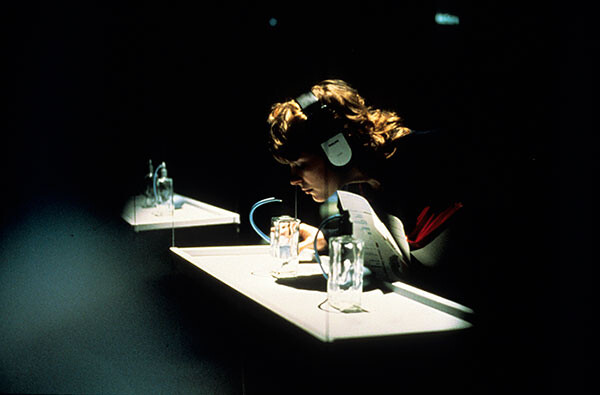

Exhibition view of Les Immatériaux, Centre Pompidou, Paris, 1985.
Every route through the exhibition represented not only the transition from a modern past to a postmodern future, but more emphatically, a journey from body to language—from the density of physical and corporal experience to the seemingly frictionless realm of information. Each trajectory through the exhibitions explored dichotomies like body-code and substance-logos, and many statements seem to present this as a one-way process. “The individual paths all lead from the body to language,“ Lyotard claimed, as is indicted by the two decisive sites that frame the exhibition, ”Theatre of the non-body” and the ”Labyrinth of language.”8 It is this unidirectional movement, while part of the curatorial statement, that must be interrogated—for if language is a labyrinth, should it not just as much be able to take us back to the body, not as it was at the outset of the journey, but in a transformed fashion? This is at least the hypothesis that we are forging, and which in what is to follow will guide our reading. Even if the exhibition on one level seemed to champion various form of dematerialization, the attentiveness to forms of resistance, or at least ambivalences, were present throughout, and perhaps the planned sequel was, to a certain extent, already there. Would walking through the exhibition in the opposite direction, i.e., entering through the exit and exiting through the entrance, represent a version of Resistances? The reply, to be spelled out elsewhere, is, we believe, no.9
Marcel Duchamp to J. J. Sweeney, quoted in Jean-Francois Lyotard, Duchamp’s TRANS/formers (Venice: The Lapis Press, 1990).
Philippe Parreno and Hans Ulrich Obrist, The Conversation Series 14 (Cologne: Walter König, 2008), 17.
Jean-François Lyotard, Discourse, Figure, trans. Antony Hudek and Mary Lydon (Minneapolis and London: University of Minnesota Press, 2011).
Paul Virilio, “The Overexposed City,” Zone 1–2, trans. Astrid Hustvedt (New York: Urzone, 1986).
Ibid., Parreno and Ulrich Obrist.
Ibid., Parreno and Ulrich Obrist.
For a thorough analyses of the exhibition layout, see Antonia Wunderlich, Der Philosoph im Museum: Die Ausstellung “Les Immatériaux” von Jean-François Lyotard (Bielefeld: Transcript, 2008), part III, and Francesca Gallo, Les Immatériaux: Un percorso di Jean-François Lyotard nell’arte contemporanea (Rome: Aracne, 2008).
Jean-François Lyotard, “Qui a peur des ‘Immateriux’?” Le Monde (3 May 1985).
See our forthcoming Spacing Philosophy: Jean-François Lyotard and the Idea of the Exhibition (New York and Berlin: Sternberg Press, 2017).
Superhumanity is a project by e-flux Architecture at the 3rd Istanbul Design Biennial, produced in cooperation with the Istanbul Design Biennial, the National Museum of Modern and Contemporary Art, Korea, the Govett-Brewster Art Gallery, New Zealand, and the Ernst Schering Foundation.
Category
Subject
Superhumanity, a project by e-flux Architecture at the 3rd Istanbul Design Biennial, is produced in cooperation with the Istanbul Design Biennial, the National Museum of Modern and Contemporary Art, Korea, the Govett-Brewster Art Gallery, New Zealand, and the Ernst Schering Foundation.
